Marport Sensor Solutions
Marport Sensor Solutions

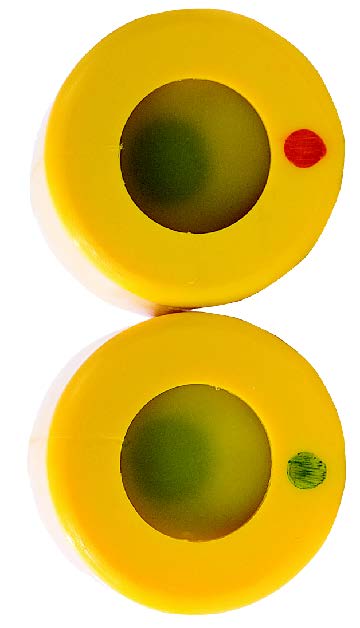
PSY is the preferred system for vessels without precise wire management systems on board
Marport’s PSY positioning system offers two routes to pinpointing the position of a trawler’s gear, providing the option of placing the doors instead of the catching vessel on a plotter screen, which provides the skipper new opportunities to focus on the gear itself. There are two options to achieve this. Using the pinger approach to poll sensors on the doors for range and bearing data, coordinates are calculated to establish the gear’s position.
This is the preferred system for vessels without precise wire management systems on board.
Trawlers fitted with more sophisticated winch systems that incorporate accurate wire measurement can opt for the wire length approach, which calculates range based on the length of warp behind the towing blocks and the bearing from the constant stream of data that the door sensors transmit to the wheelhouse. Each option has its advantages, with the wire length approach offering a higher level of precision as well as a more rapid update, while the pinger system is more suited to older or less sophisticated fishing vessels.
Being able to place the trawl door sensors directly on the plotter offers the skipper numerous advantages, not least in being able to manoeuvre the gear with more security in a tight space while keeping the doors a safe distance from obstructions or canyon walls when chasing marks over difficult terrain.
The Marport PSY is fully capable of interfacing with other systems to display the position of the trawl gear on chart plotters.
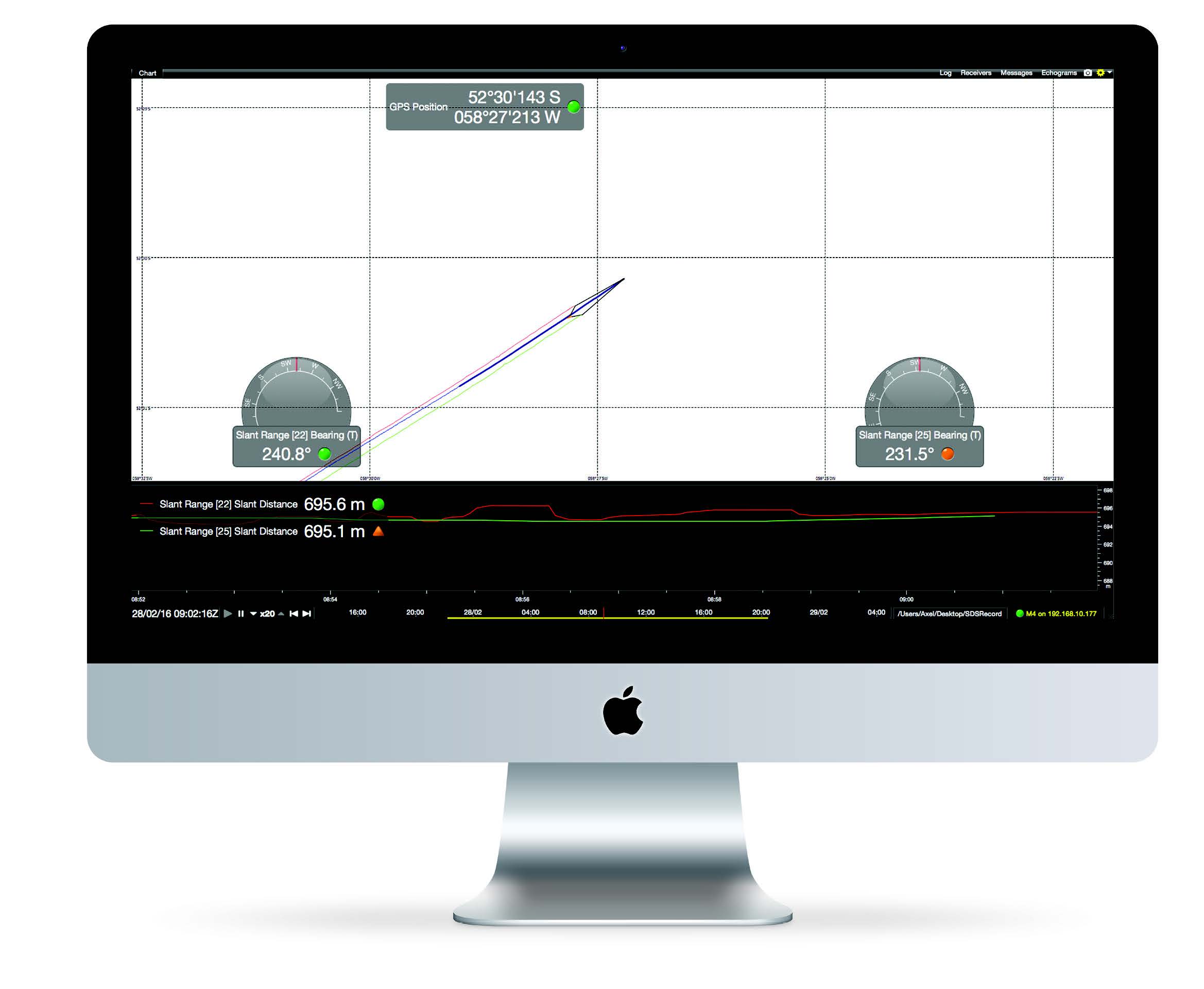
Location of each door are displayed on chart plotter.

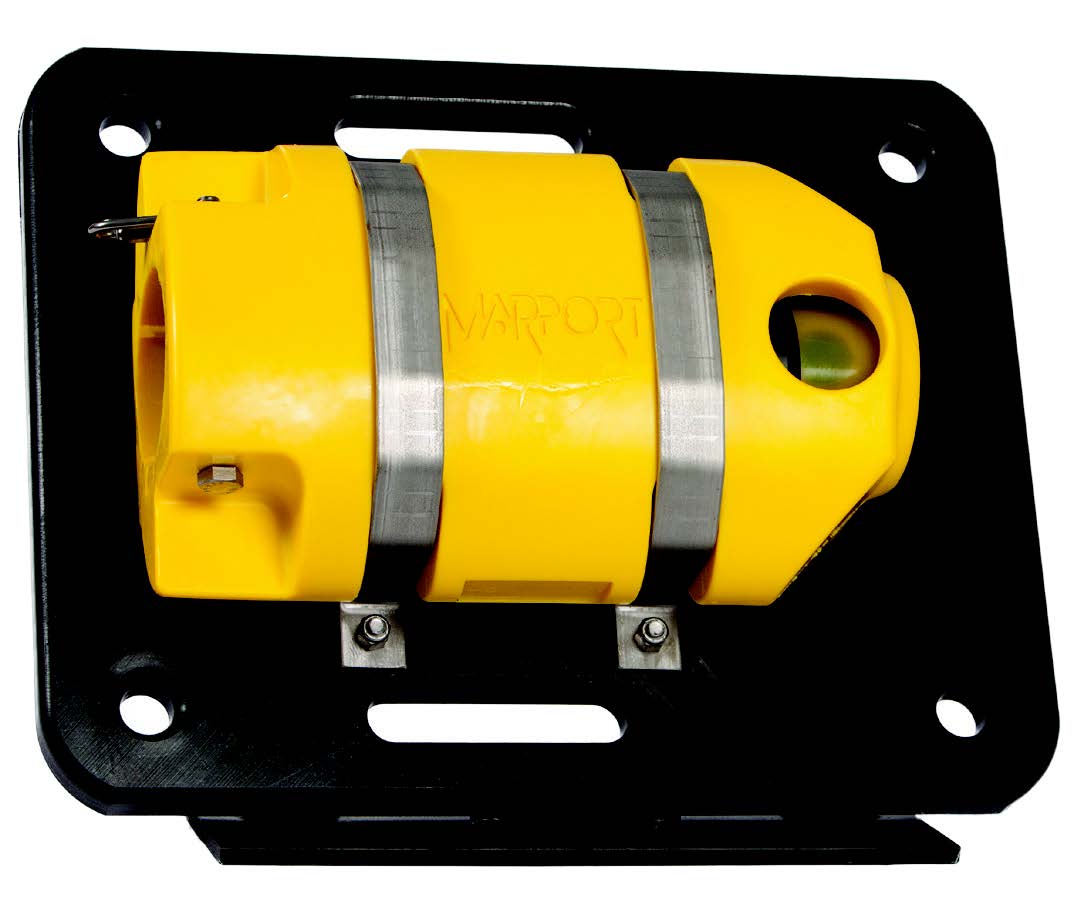
This is a piece of trawl equipment that has outstanding versatility
Marport’s High-Definition Trawl Explorer is the skipper’s eyes under the sea. Mounted on either the headline to provide a view of fish passing under it and back into the belly, or on the tunnel to show fish making their way down to the codend, the HDTE employs CHIRP technology to relay a detailed echogram image via a wireless link direct to the wheelhouse. It offers higher resolution than any other comparable product, with individual fish down to 2.5cm discernible on the real-time echogram. Echograms are calibrated, so they appear identical across HDTE units and this is a feature that no other manufacturer has been able to make available. The HDTE has a 3Hz horizontal resolution and target strength can be calibrated from recordings, building on experience and past data to refine the information presented in the wheelhouse. This is a piece of trawl equipment that has outstanding versatility, capable of looking both upwards and downwards – or both – and offering a choice of three programmable operational modes, in addition to pitch & roll status, temperature and depth data, and batter status, all with a rapid update rate
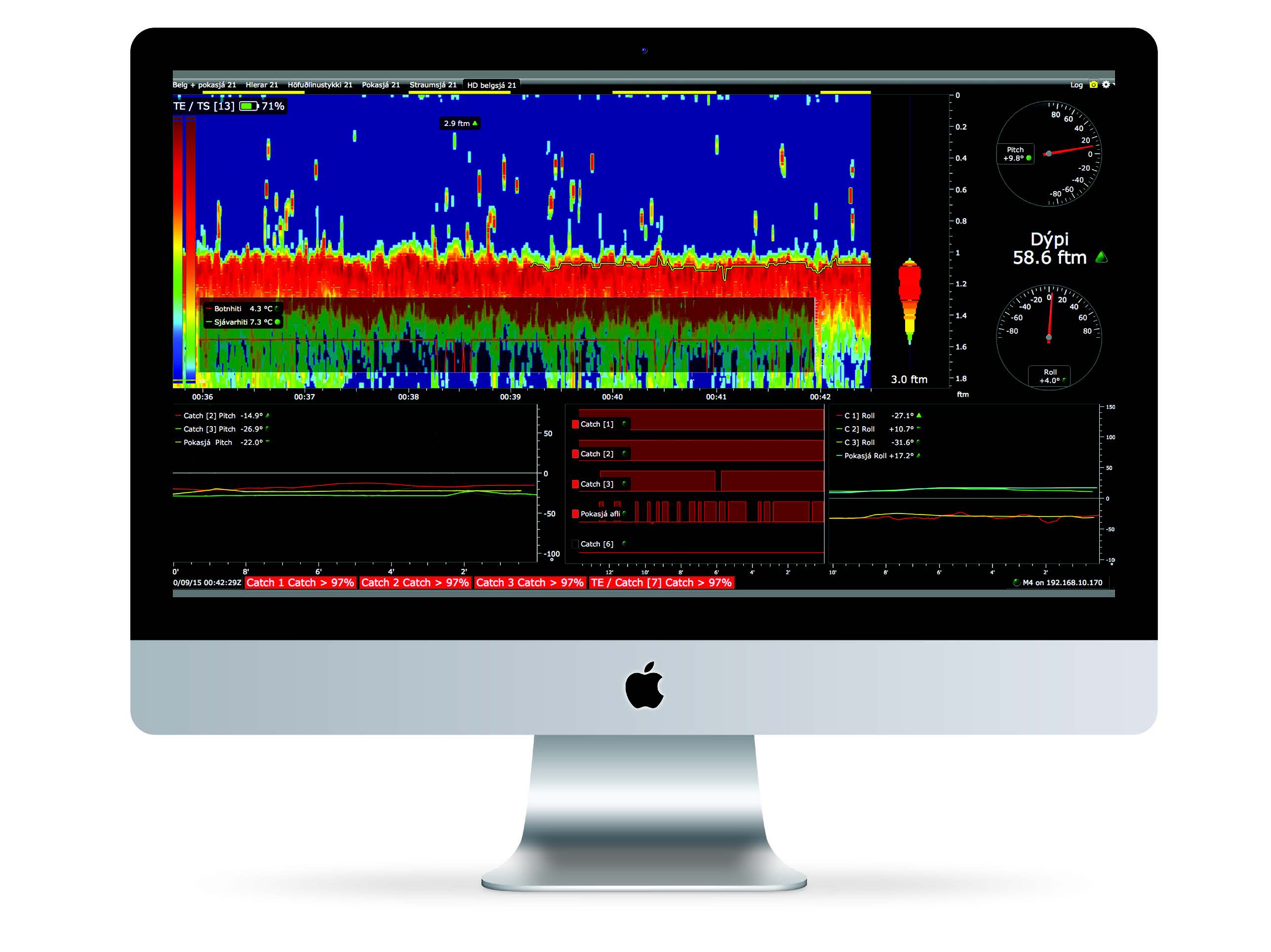
Vertical resolution less than 2.5 cm, Horizontal resolution 3hz, Fully calibrated target strength

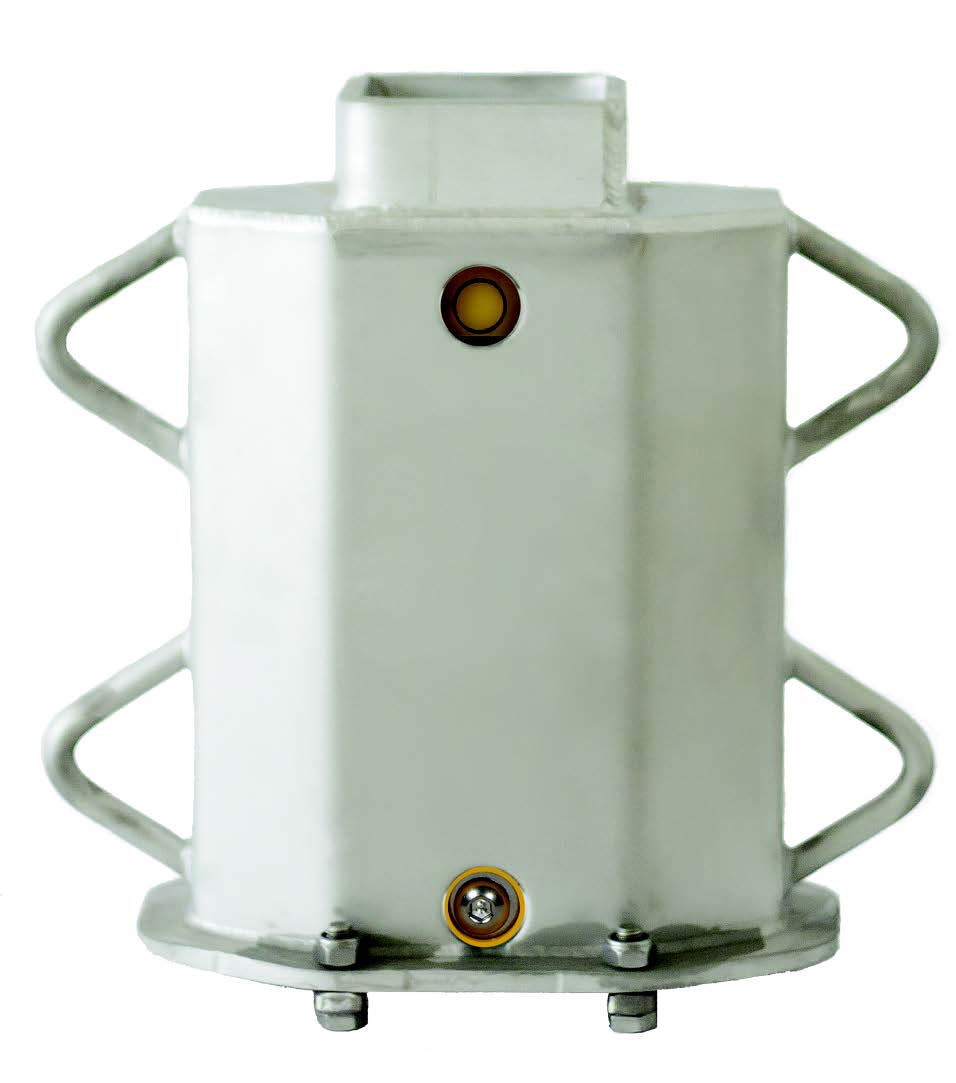
The Dredge Explorer is designed specifically for fisheries using clamor scallop dredges
The Dredge Explorer is a new application for a fishing gear sensor that draws on much of the technology and expertise Marport has in developing systems for trawl gears. Designed specifically for fisheries using clam or scallop dredges, the Dredge Explorer provides the skipper with a range of information on the gear’s position and performance that was previously unavailable. The Dredge Explorer sensor is located on top of the dredge and relays pitch and roll information in real time.
The pitch angle tells the skipper if the dredge is lying at the optimal angle, or if it is positioned in such a way that the ideal harvesting angle is not being achieved. Based on this, the skipper can opt to adjust towing speed or warp length to align the gear properly. In the other axis, the roll angle provides an immediate alert if the dredge rolls over while towing. A depth function relays the dredge’s height over the seabed, with a realtime echogram. This tells the skipper instantly if the gear leaves the ground, providing an opportunity to adjust the speed or warp to get the dredge back to its optimal fishing position without losing fishing time. The dredge explorer is installed on the dredge and can provide the operator with information that will increase efficiency.
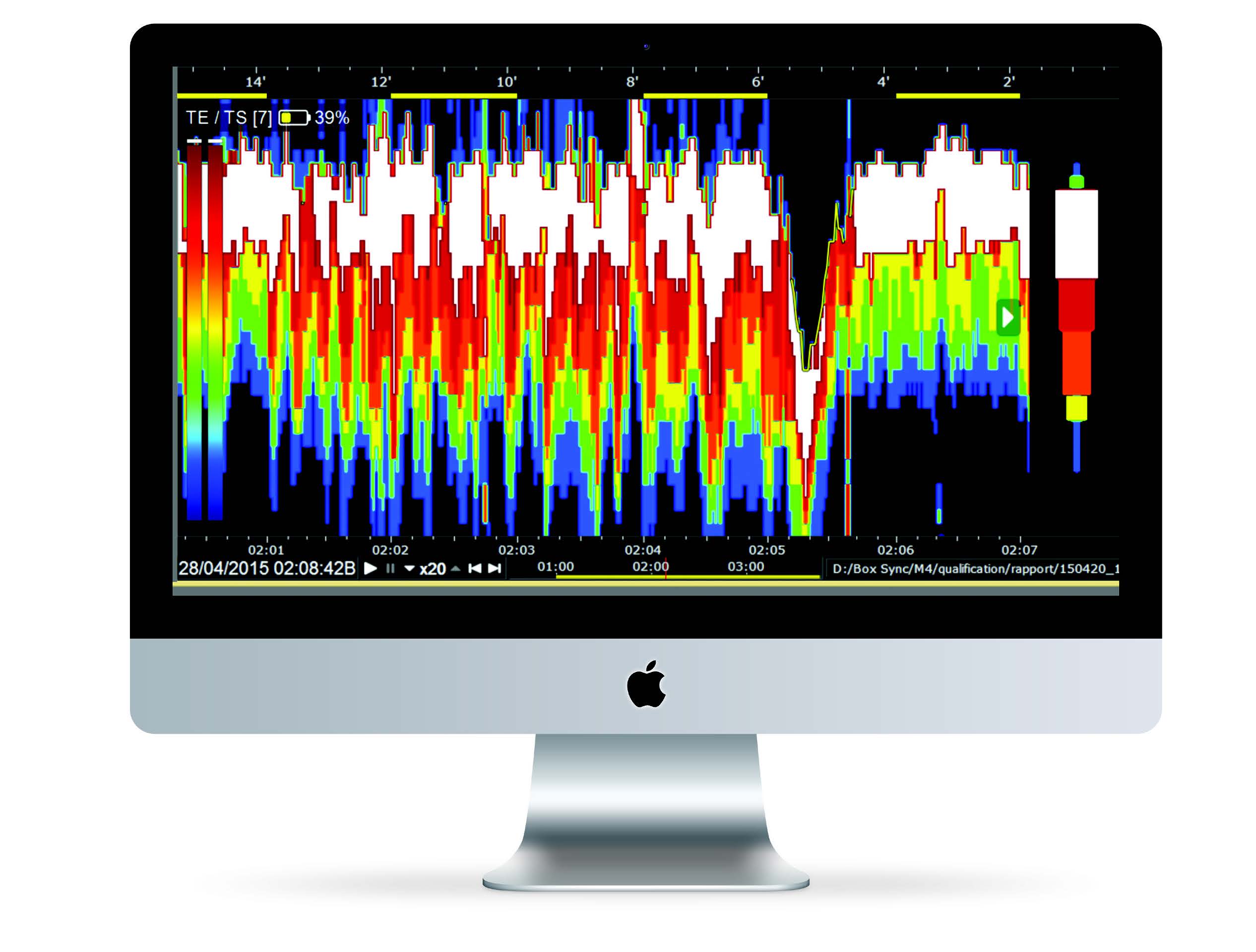
True bottom contact from the dredge, Pitch & Roll update every 1s

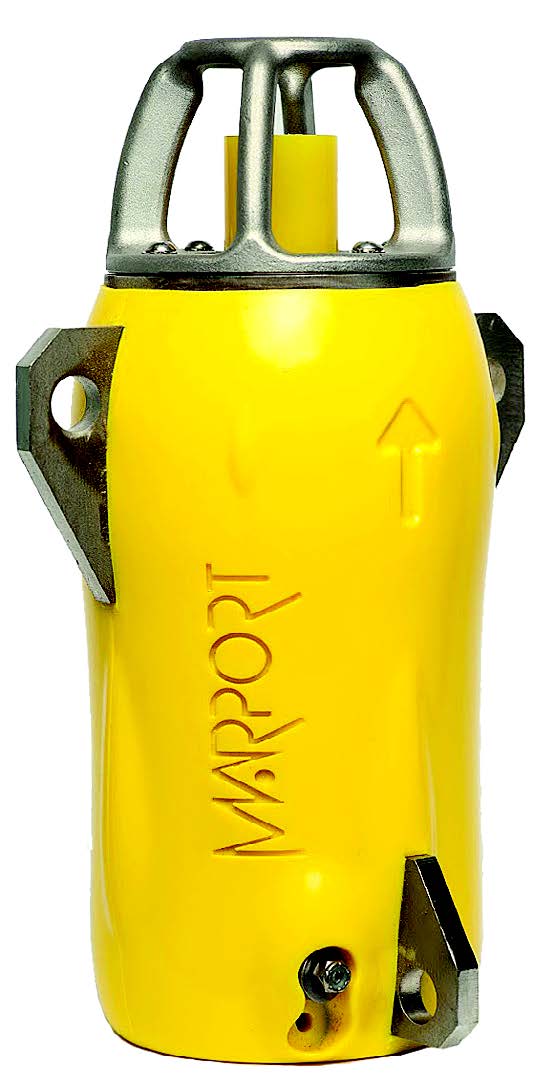
The Seine Explorer relays data back to the wheelhouse as a purse seine is shot away and throughout the fishing operation.
Mounted on the lead line of a purse seine in a robust protective steel case, the Seine Explorer relays data back to the wheelhouse as a purse seine is shot away and throughout the fishing operation. It has been designed to incorporate omnidirectional uplink technology that ensures no loss of signal throughout the fishing operation, starting the moment the purse seine is shot away. The skipper is shown an echogram of the shot as it takes place, displaying the distance to the seabed and a Scanmar–compatible digital readout of the depth of water above and below the leadline. For purse seining in shallow water, Marport’s Seine Explorer is an essential tool that ensures the gear can be kept safely clear of ground obstructions so gear damage can be avoided, and in both deep and shallow water the upward-seeking option that provides distance to the surface gives the skipper an accurate indication of the sinking speed of the leadline.
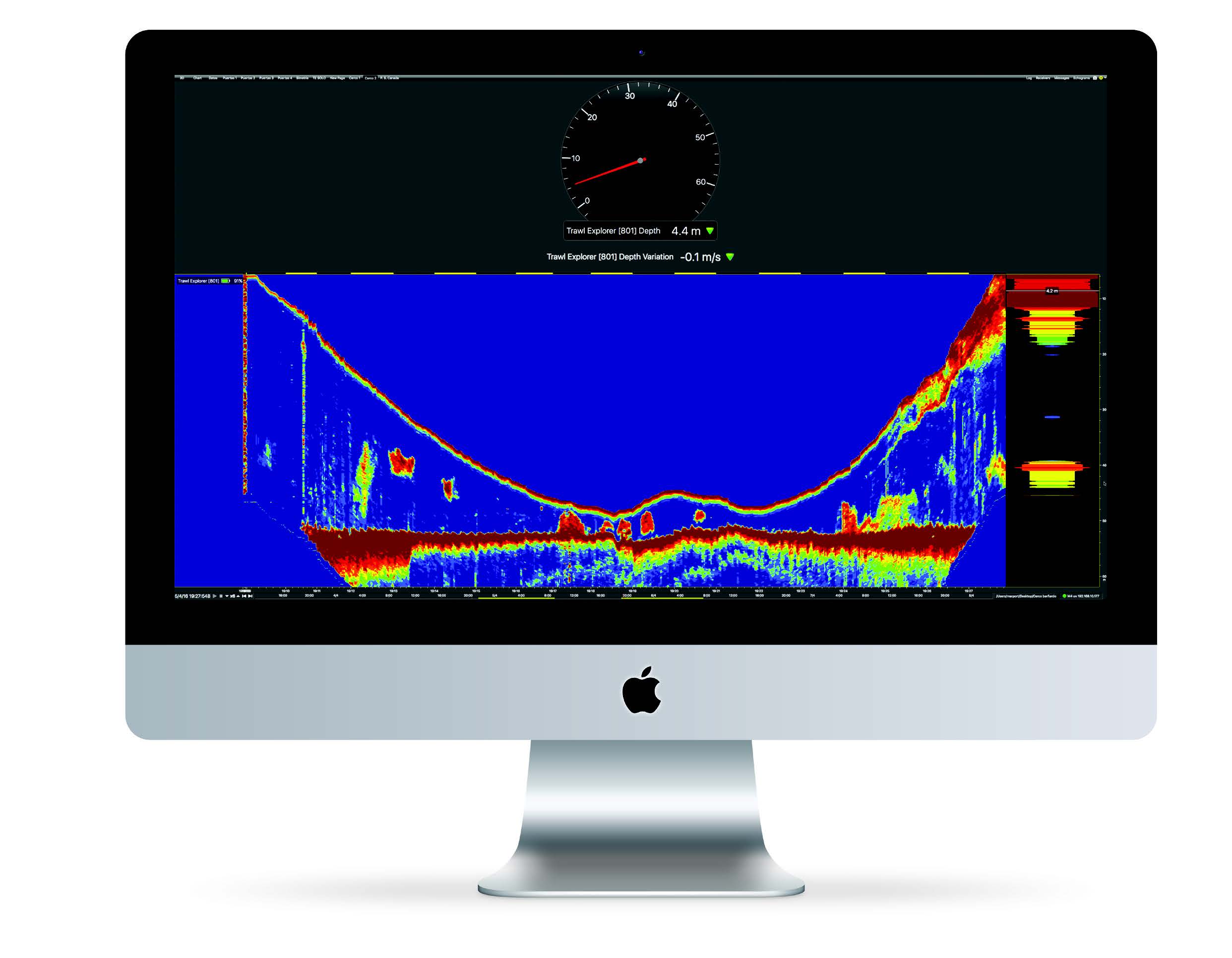
Bottom is shown as the seine lays, Fish schools can be seen if the seine is pulled in to fast

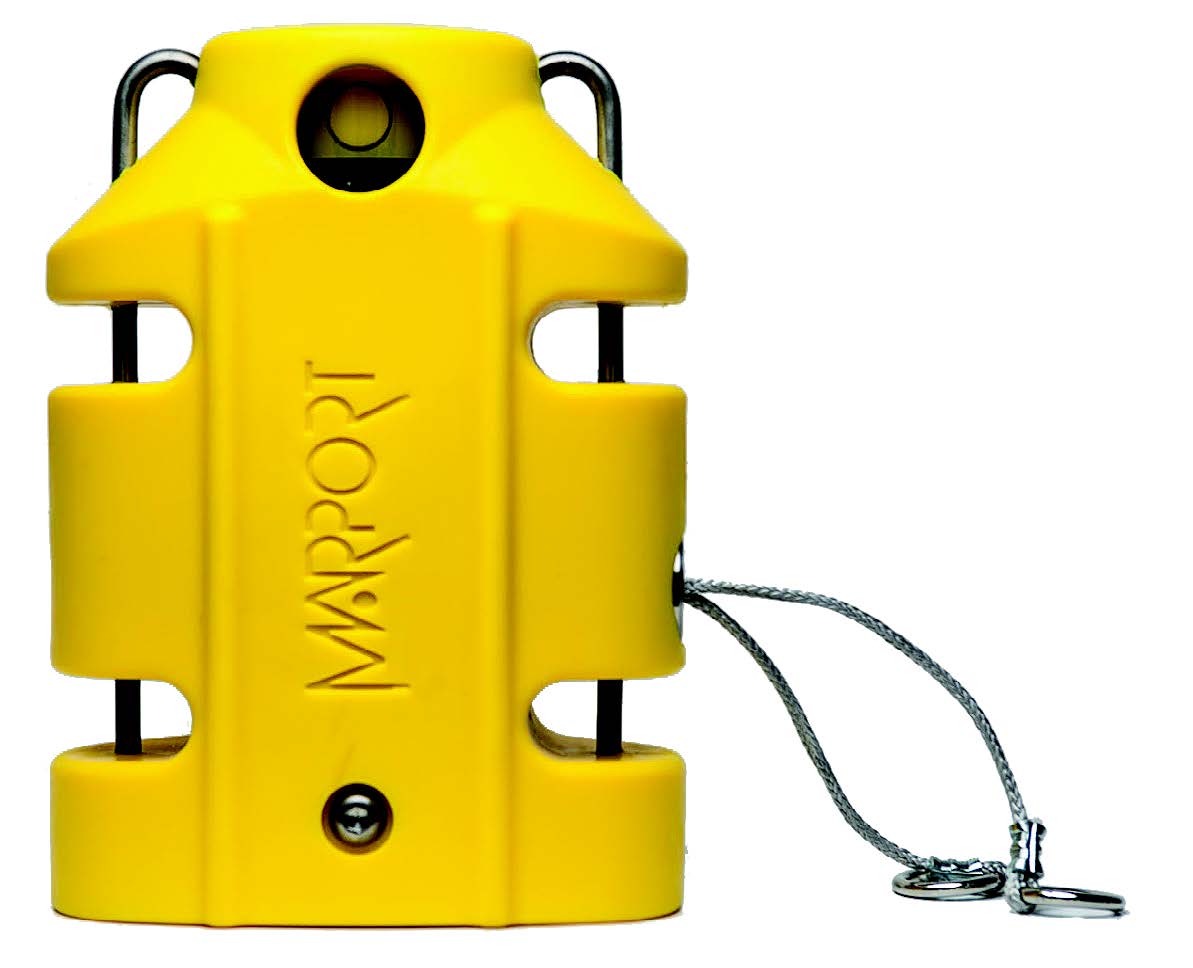
The Catch Explorer provides a series of updates on the fish as they pass into the codend from the trawl mouth and through the belly.
This downward-looking sensor is fitted on the top sheet of a codend or tunnel to all the skipper to monitor the contents of the codend in real time as the gear is fishing, providing a series of updates on the fish as they pass into the codend from the trawl mouth and through the belly. This gives a rolling echogram image of the volume of catch in addition to the data supplied by the usual codend sensors that are triggered as a certain amount has been caught. The Catch Explorer also features depth, temperature and pitch & roll data.
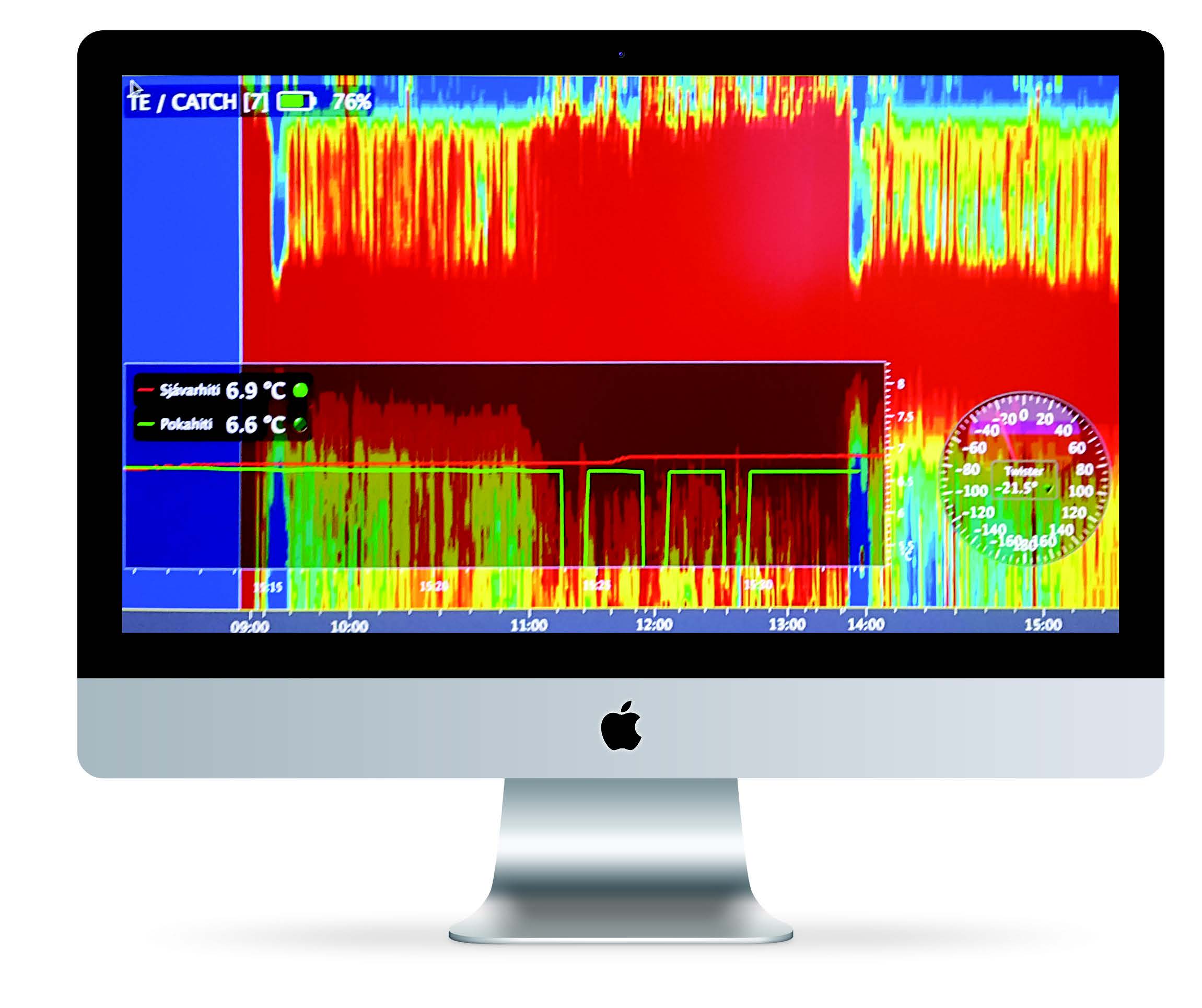
Full echo view of the coded, Echogram gets denser as the codend fills up and expands

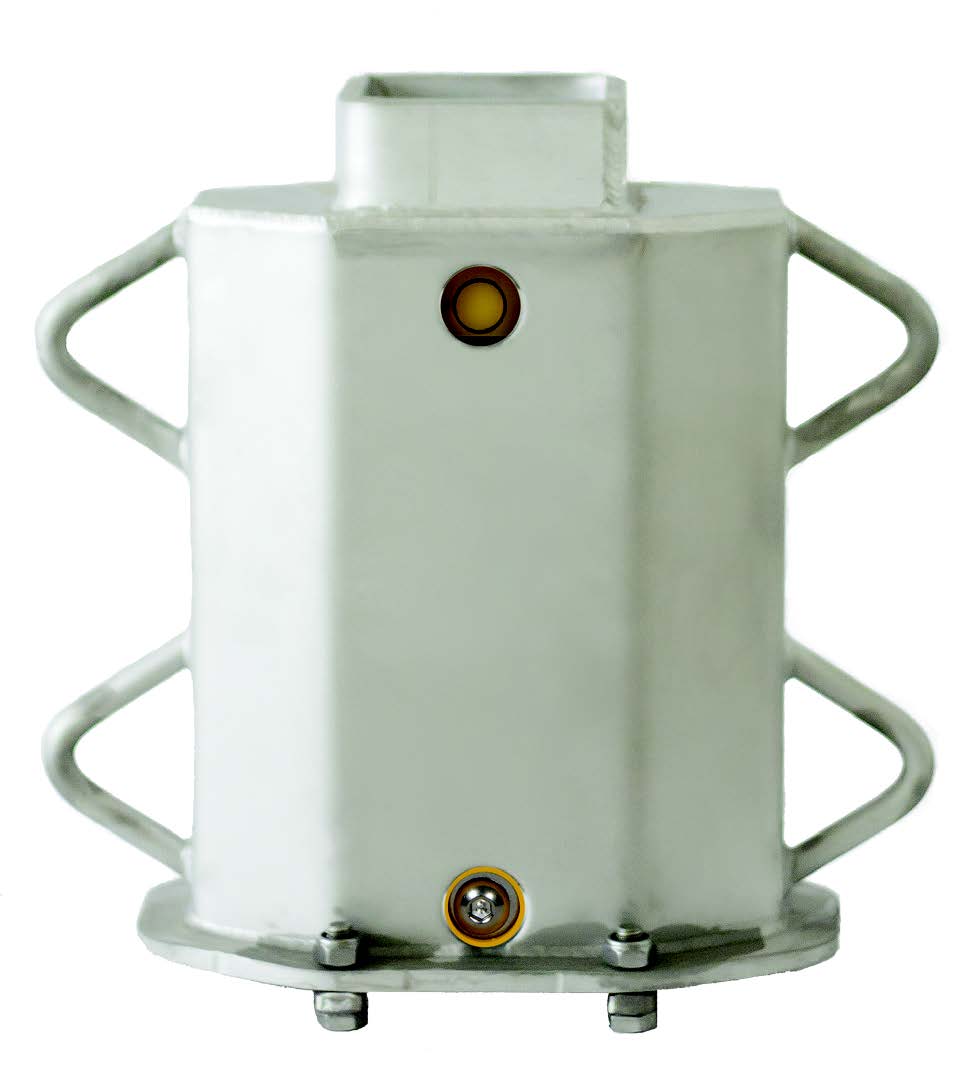
The Bottom Explorer minimises lost fishing opportunities and ensures that the trawl is actively on the ground.
Fixed to a trawl’s footrope, the Bottom Explorer provides a constant confirmation that the gear is in contact with the seabed, or an indication that the trawl has risen off the ground, giving the skipper the opportunity to respond by adjusting towing speed or warp length to place the gear back were it belongs. This minimises lost fishing opportunities and ensures that the trawl is actively on the ground. Depth, temperature and pitch & roll data are also part of the package that sends ground contact data with a 3hz update rate three times per second to the wheelhouse display. Unlike systems on the market that use a mechanical arrangement to sense ground contact, Marport have opted for an acoustic approach for greater reliability.
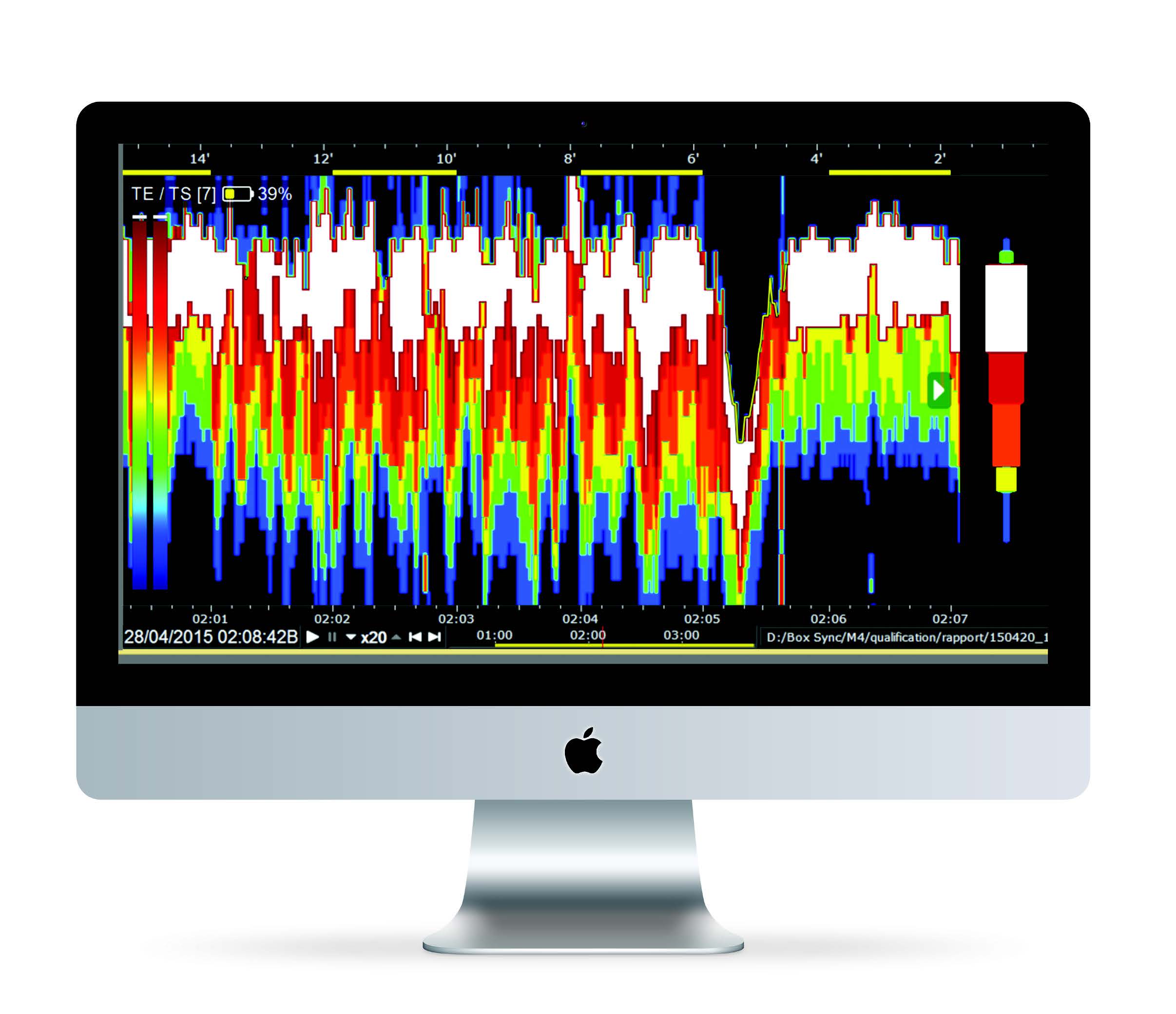
True bottom contact with a full echo view from the footrope, Clear indication when the footrope lifts
off bottom

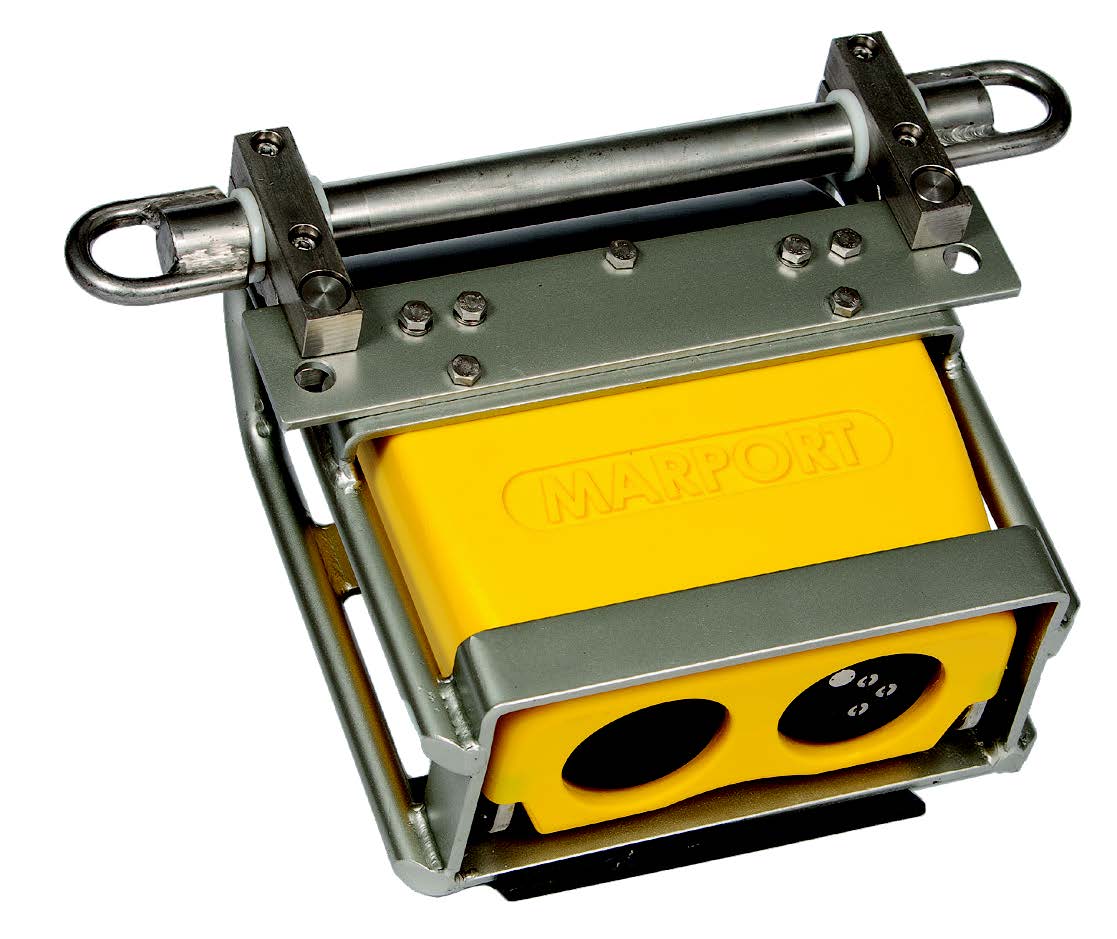
The Speed Explorer combines the functions of a trawl eye headline sounder with a trawl speed sensor.
This new addition to the Marport range combines a huge amount of functionality in a single headline mounted package. The new Speed Explorer unit combines the functions of a trawl eye headline sounder with a trawl speed sensor to give a comprehensive data output direct to the skipper. As well as the depth, temperature and pitch & roll data that has become a standard option with every virtually Marport sensor, the Speed Explorer offers an echogram, boosted from 1hz to 3hz to provide three updates per second. The data feeds providing information on water flow along the direction of the tow and across it are also upgraded in this unit to send an update every three seconds instead of every twenty seconds, giving the skipper an integrated overview of the trawl’s opening, the flow and the effects of the currents around it.
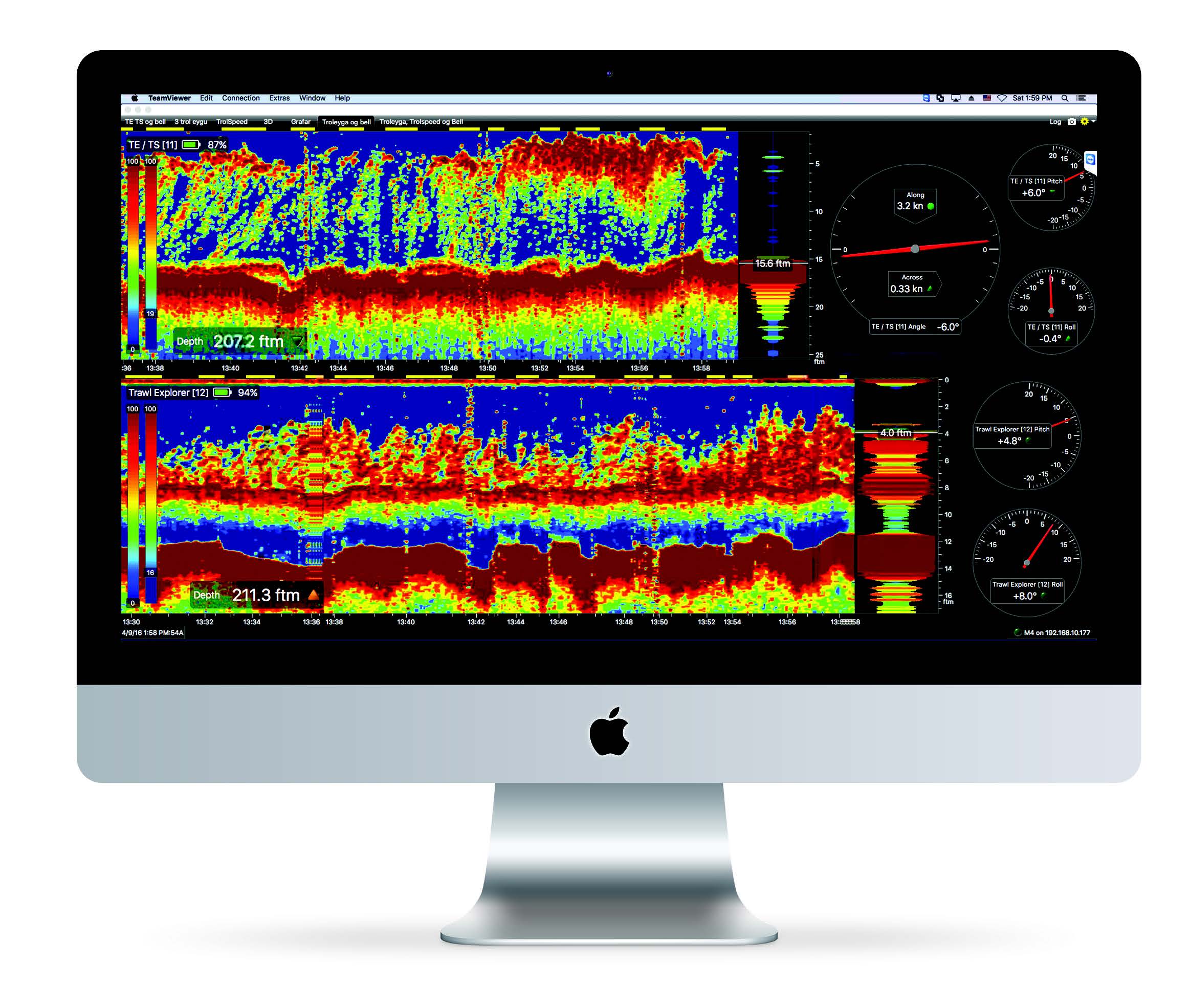
Faster update echogram gives an excellent view from the headrope, Along and across speed
is updated every 1s

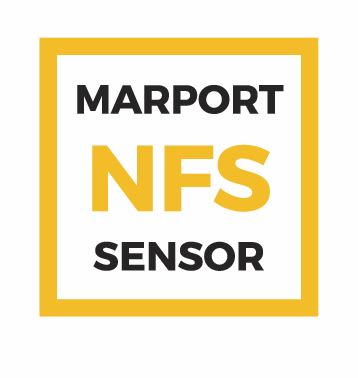
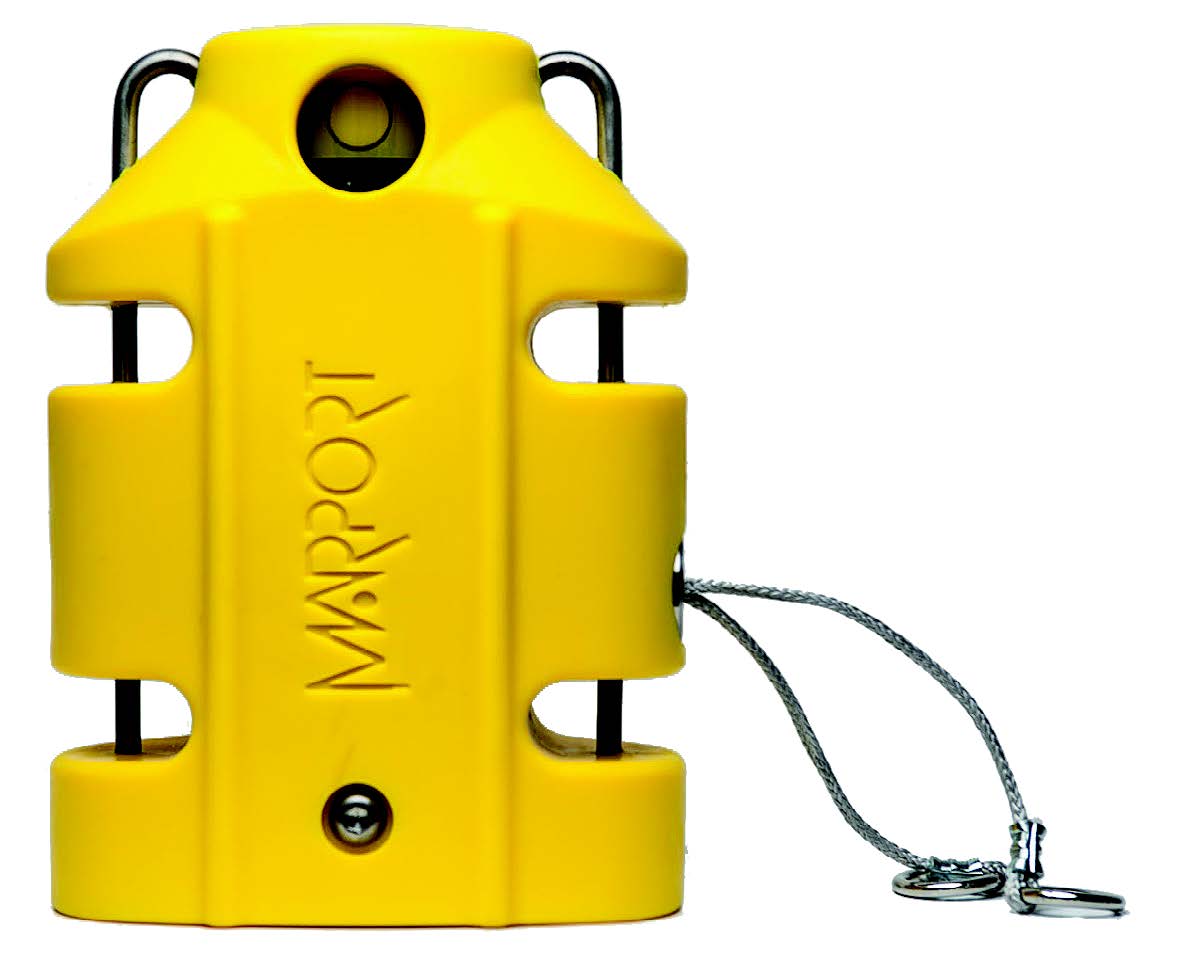
Would you shoot your gear without knowing when the trawl was starting to fill?
Would you shoot your gear without knowing when the trawl was starting to fill? Catch sensors have become key items of equipment, providing not just information on how fast the codend is filling up, but also giving vital indications on whether or not the gear is skewed, helping you avoid those lost tows. On top of all that, each catch sensor transmits a precise temperature reading to the wheelhouse. Marport’s catch sensors are among the most sophisticated on the market today, offering advanced single, dual or simultaneous operation to provide a reliable signal and to ensure uninterrupted communication with the gear. We provide high sensitivity and rapid response times, plus updates at 20 second intervals, along with a typical battery life of between 380 and 540** hours, extendable by enabling low power functions. Our catch sensors are programmable on board and can be used as direct replacements for 40kHz (Simrad® and Scanmar®) and 70kHz (Simrad® and Wesmar®) sensors.
.
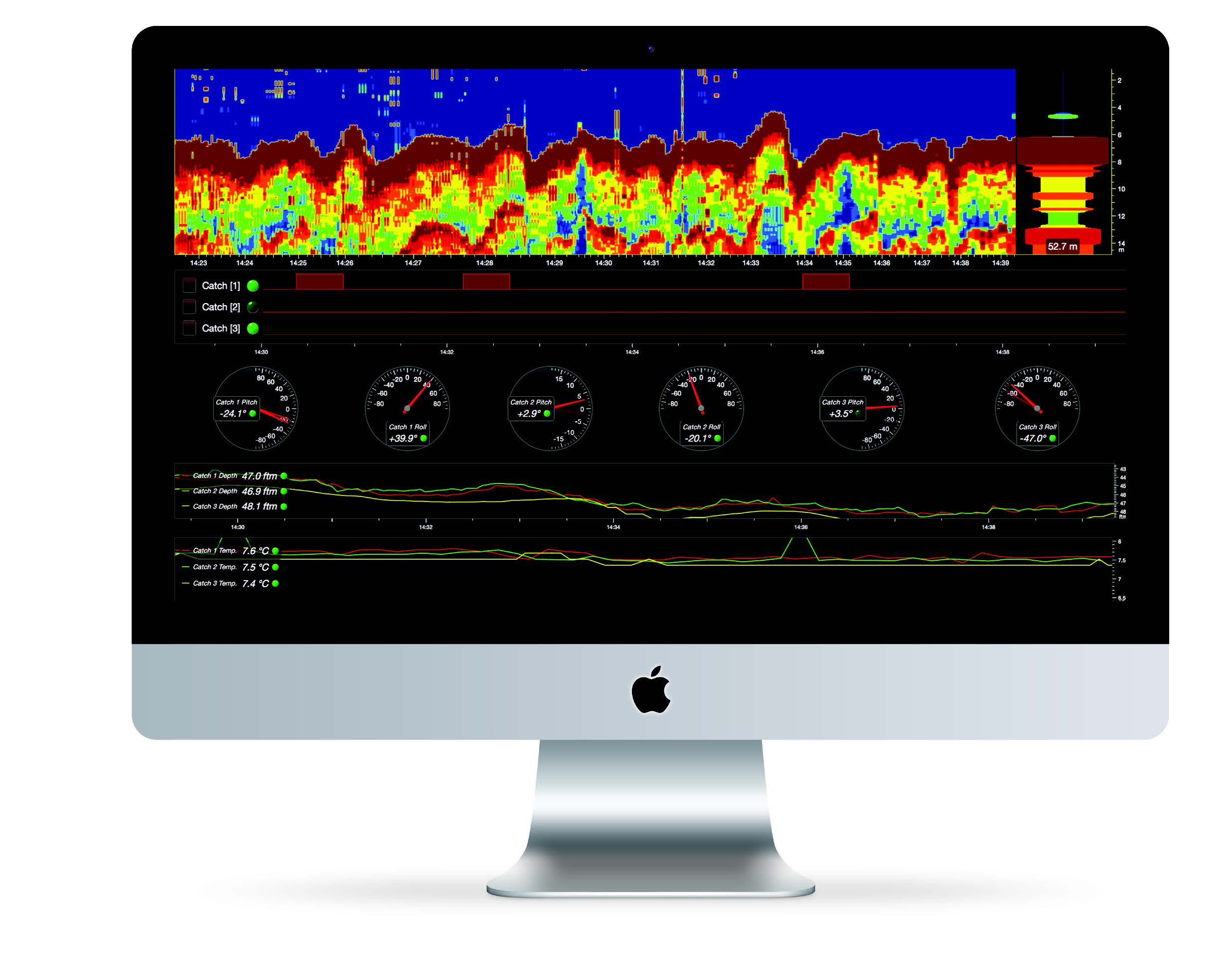
Catch sensors can be updated with Pith&Roll, Depth and Temperature, Catch sensor gauges can be placed anywhere needed.
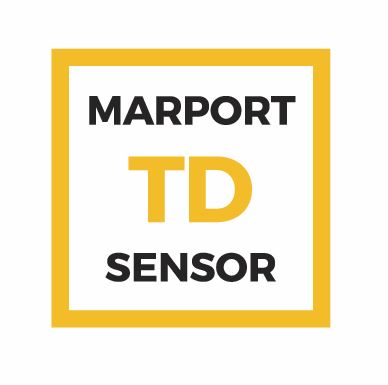

A depth sensor does just what it says on the label, and these do so much more.
A depth sensor does just what it says on the label, and these do so much more. It’s primary function is to measure the depth of the gear relative to the surface, while also being able to relay information about the speed of the gear through the water as the gear is lifted or allowed to sink. Combined with the sensor’s temperature function, this provides a range of data that gives the skipper the information needed to maintain the gear depth at its optimum level for the preferred conditions for particular species. We see the depth/temperature sensor as a time-saving tool that cuts down on time wasted with the gear at the wrong location. It has a typical battery life of between 450 and 540 hours that can be extended depending on the power settings used.
.
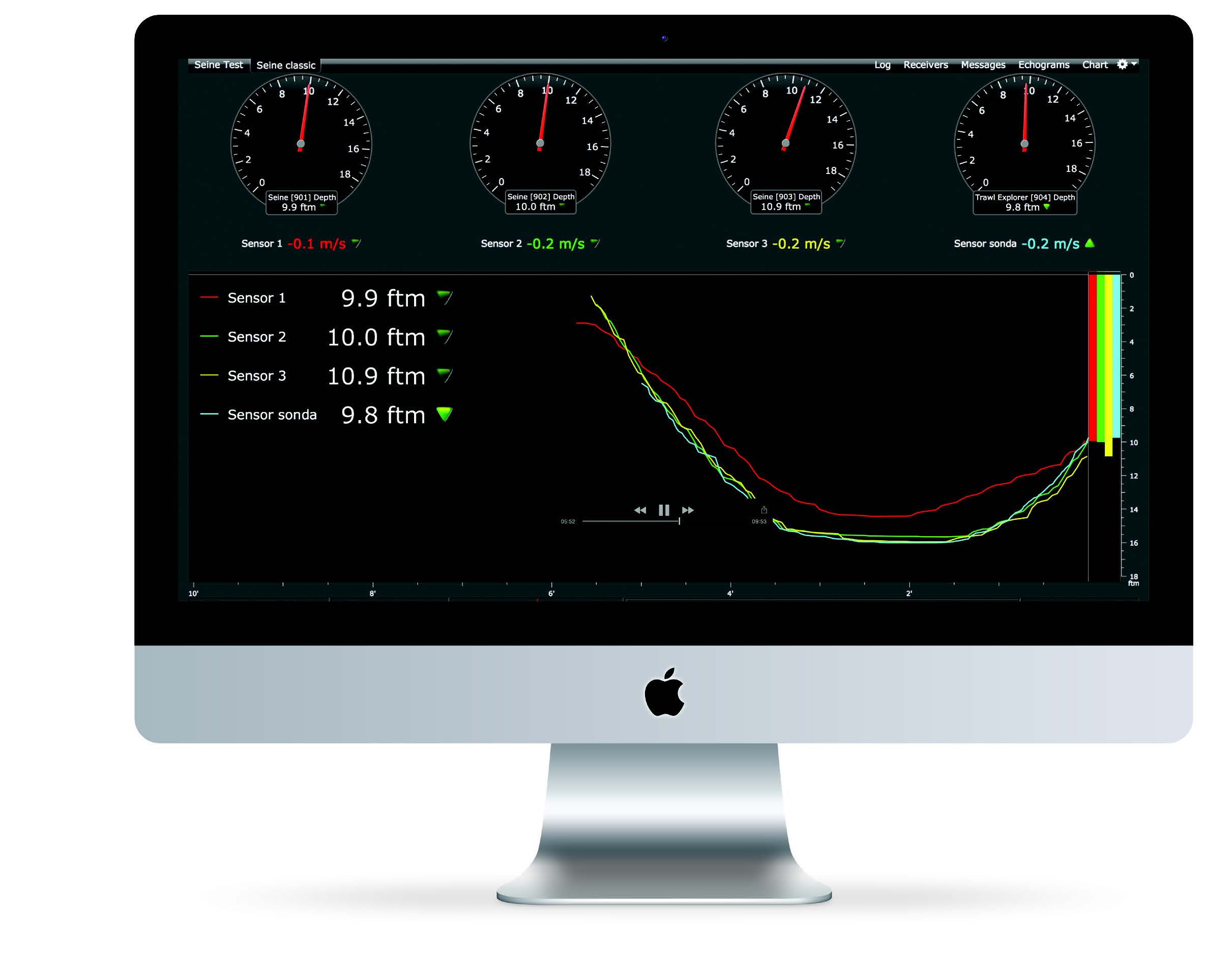
Depth and temperature information can be displayed as text, gauges or line graph

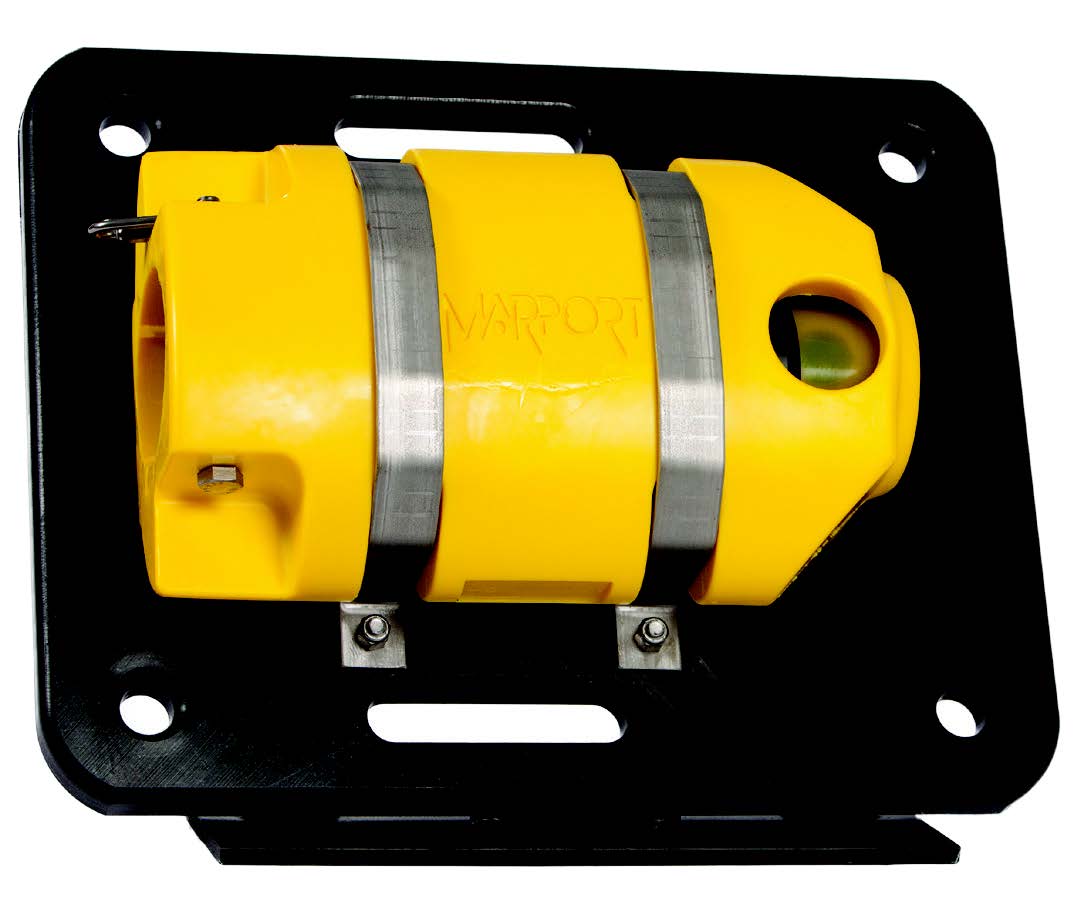
Marport’s Trawl Explorer is your eye on the fishing gear.
Marport’s Trawl Explorer is your eye on the fishing gear, a sounder with a heavyweight suite of capabilities placed on your trawl’s headline sending a wealth of information to the wheelhouse. This starts with an echogram of the trawl opening and fish passing into the gear, as well as depth, temperature and distance to the seabed or footrope, plus a visual representation of the footrope to seabed clearance if the gear is towed off the bottom. The Trawl Explorer has a host of features for a variety of operating modes, and is a dual frequency unit. This allows the beamwidth to be selected from wide to narrow along with the most suitable of several sounding modes to suit the conditions. Additional options are for a pitch and roll function to provide a realistic pre-sentation of the gear’s behaviour while trawling, and the Trawl Explorer can be fully programmed on board.
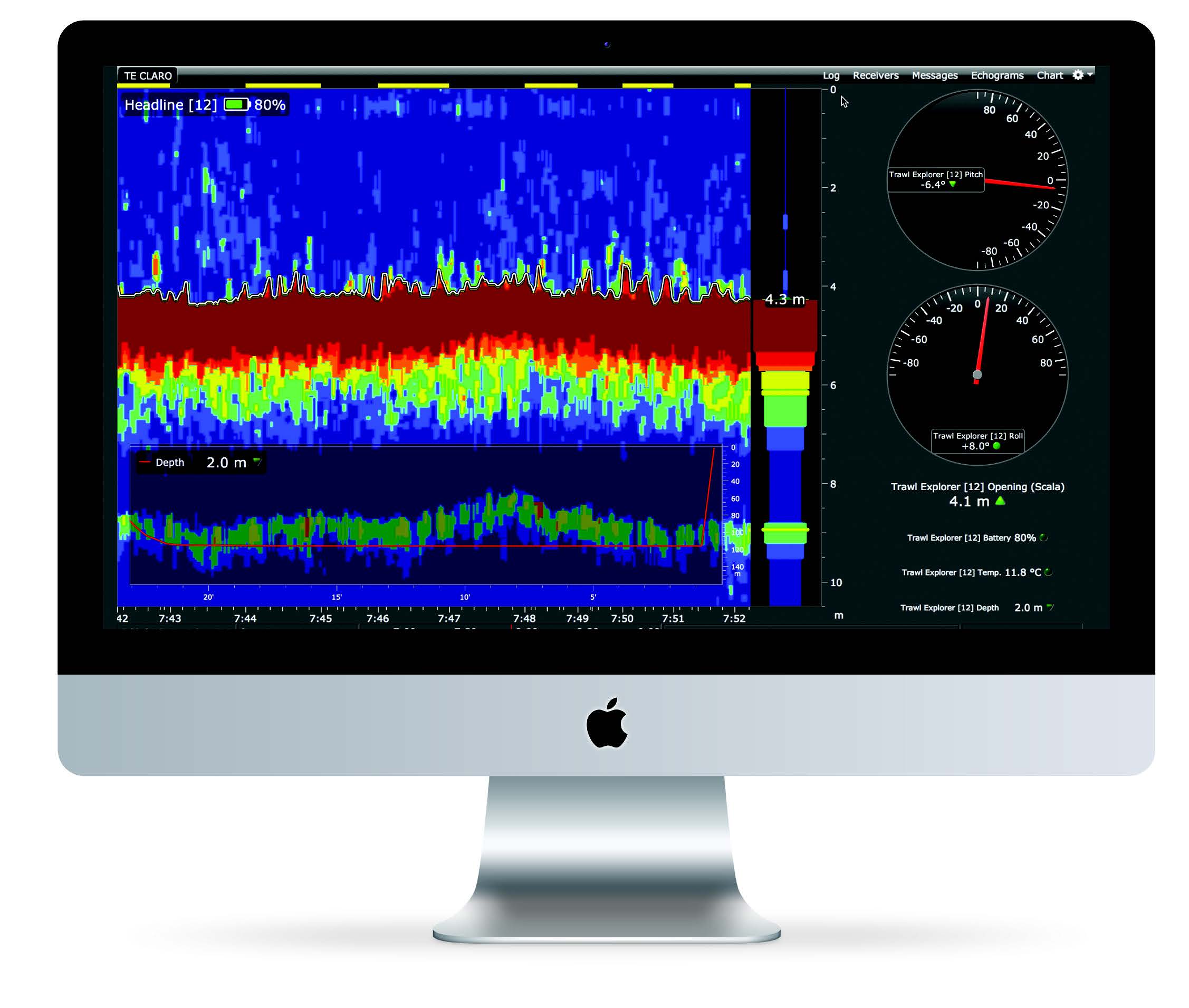
Clear echo view from the headrope or tunnel, Pitch&Roll built in, Depth & Temperature included

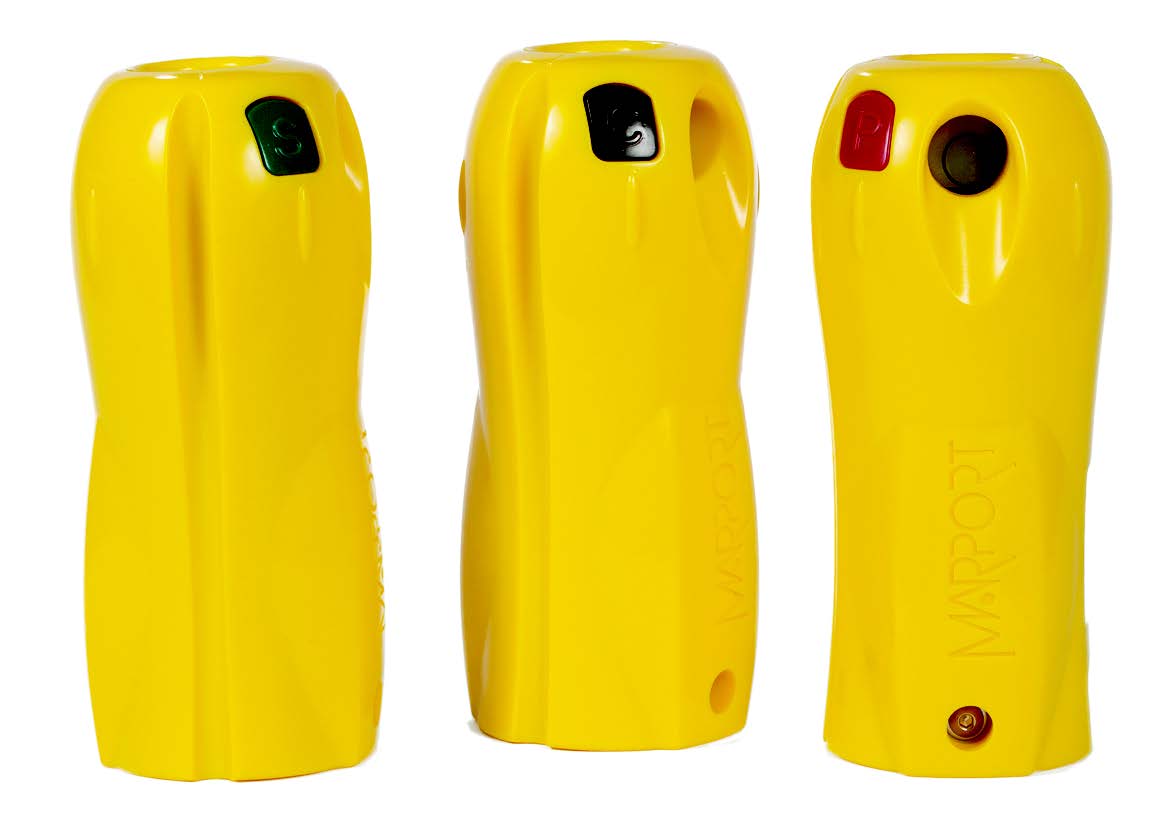
Gives the skipper the full picture of each trawl door’s performance.
Marport’s MFX Door Sensors use a master and slave configuration, communicating via a transverse wireless link on 110 or 144kHz. The master sensor interrogates the slave on the opposite trawl door, relaying data from both sensors to the catching vessel via a wireless uplink broadband transducer. As well as the door spread, this arrangement gives the skipper the full picture of each trawl door’s performance, including pitch and roll function in two axes to indicate the inward/outward heel of each door as well as the forward/aft tilt, plus depth and water temperature. Marport’s sensors are leaders in their field, capable of running and displaying all functions at any one time. Trawl door sensors are crucial to maintaining stable gear geometry, optimising catching capacity while also minimising the wasted time and energy that are by-products of having skewed gear, and contributing to keeping gear damage to a minimum. Data updates are as frequent as every three seconds, highlighting the importance of reliable trawl door data, providing immediate warning if the door cross over each other or if one door falls flat during a tow. As well as information on door performance itself, data from the door sensors can often be an indicator of a problem elsewhere in the gear, such as a collapsed trawl, and our sensors are designed for all types of trawling that use doors. MFX door sensor battery life is between 90 and 200 hours for the master sensor and is as high as 300 hours for the slave unit, based on a standard charging time of 8 to 12 hours.
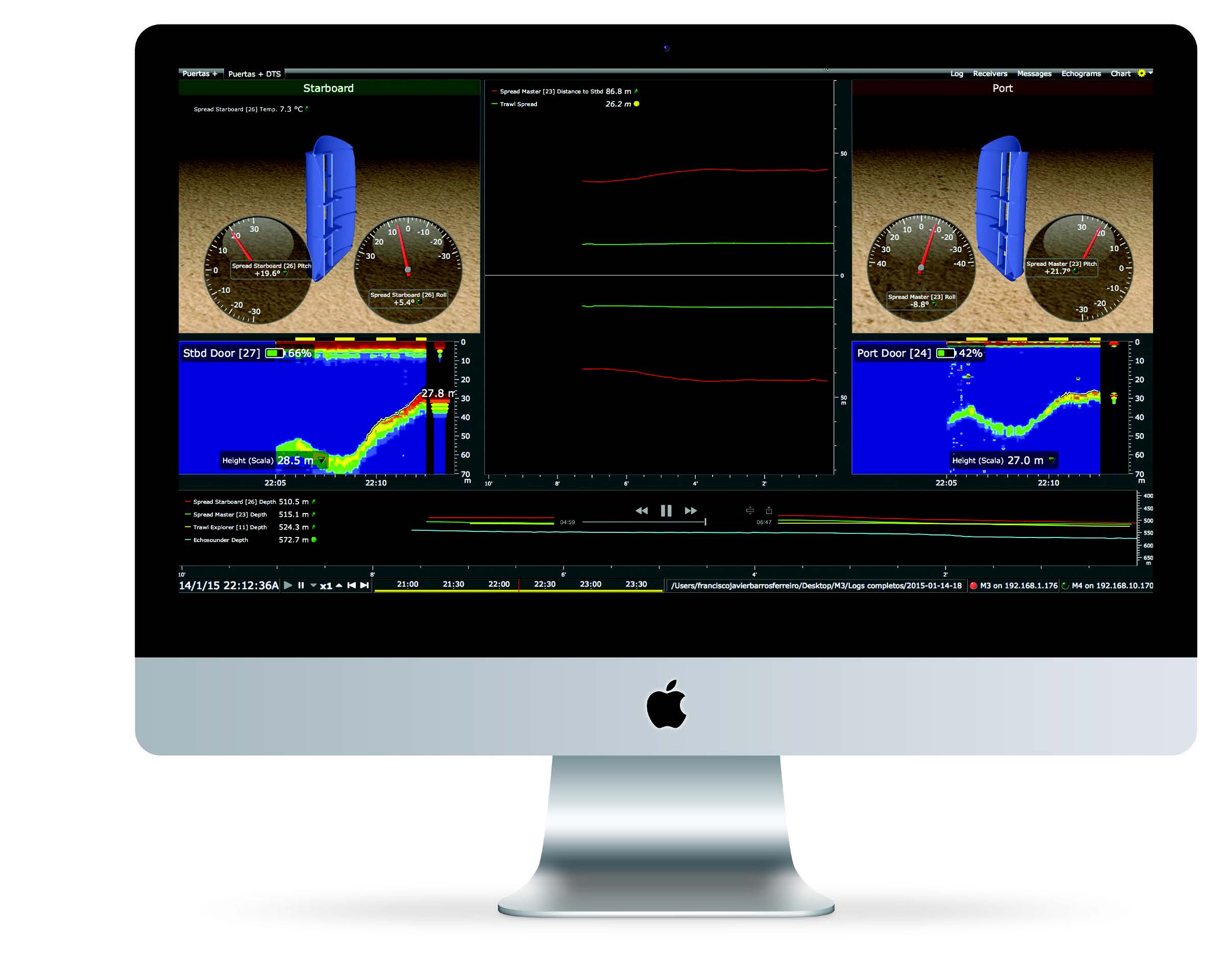
Distance between doors displayed as text or line graphs, Pitch and Roll displayed as 3d doors give clear indication at a glance, Data can be combined to give clear comparison between doors
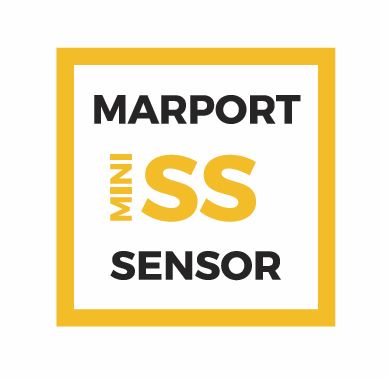
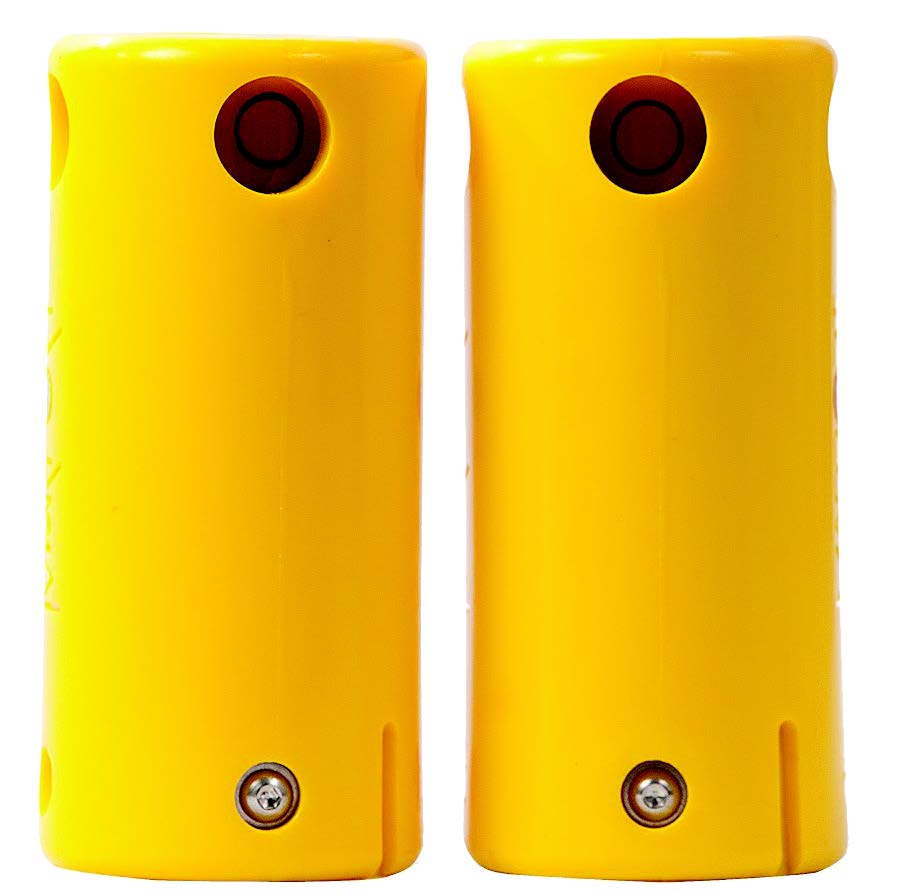
Marport’s multifunction XL-DD ‘Small Frame’ trawl door sensors have all the functionality of larger sensors.
Designed to meet the needs of smaller trawlers towing semi-pelagic gear or flying their doors off the bottom, and using gear on which space is at a premium, Marport’s multi-function XL-DD ‘Small Frame’ trawl door sensors have all the functionality of larger sensors, operating with a master and slave arrangement. The master sensor sends both sets of data to the catching vessel’s wheelhouse, with update rates of as fast as every three seconds, providing the skipper with door spread, inward/ outward heel, forward/aft tilt, depth and temperature data. The master and slave sensors communicate via a 110 or 144 kHz wireless link, with the option of a 30.8kHz frequency used in special applications in gear and fisheries research. MFX trawl door sensors are essential for keeping the gear correctly aligned, particularly working semi-pelagic or pelagic gear in which precision is critical to controlling the fishing gear and optimising fishing opportunities, ensuring that the gear geometry is maintained and providing early warning if there is a problem with the trawl, which in turn allows skipper to compensate or haul and fix the problem without wasting time and fuel Battery life is typically around 90 hours, based on a standard charging time of 8 to 12 hours, although endurance can be extended by using power-saving settings.
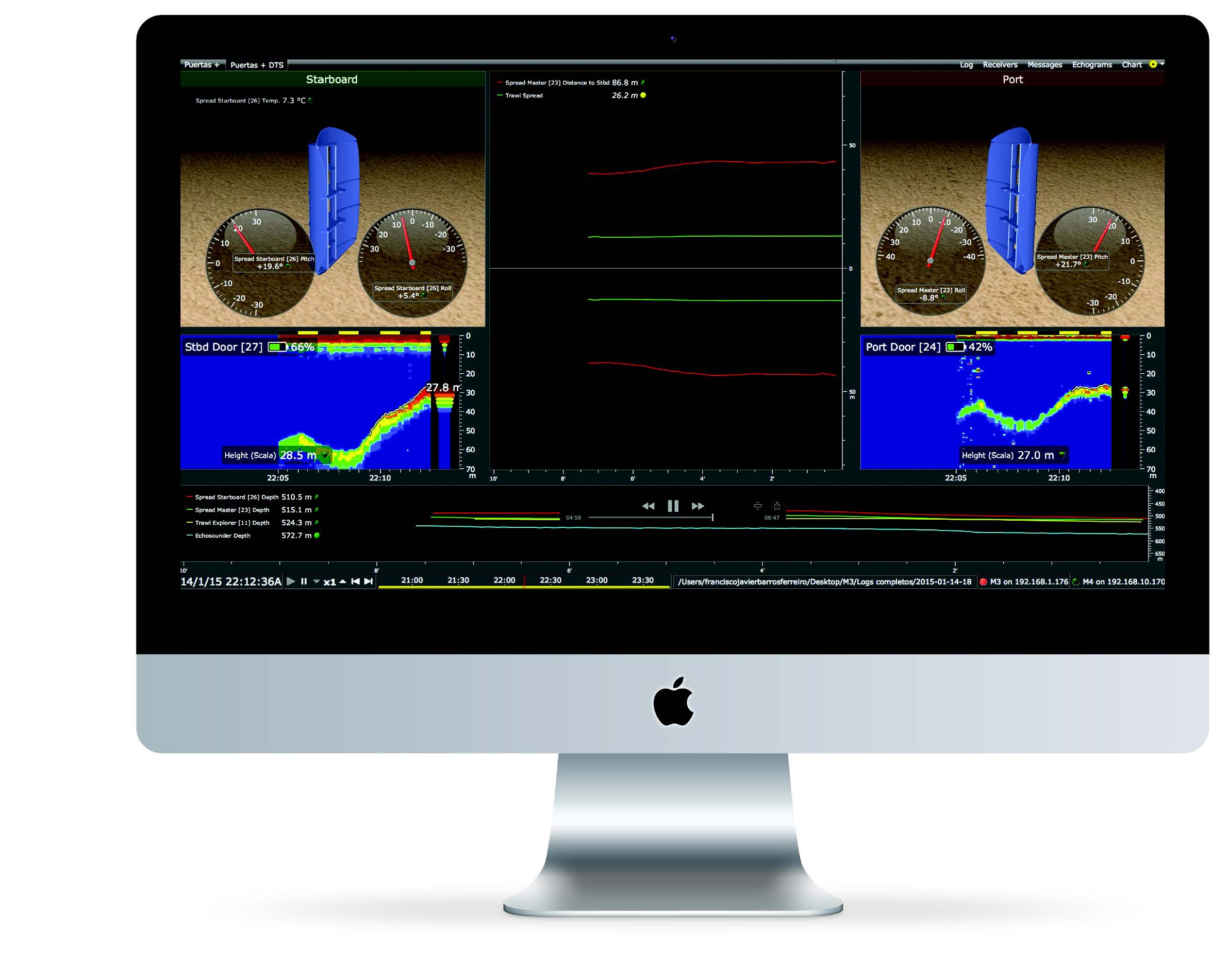
Distance between doors displayed as text or line graphs, Pitch and Roll displayed as 3d doors give clear indication at a glance, Data can be combined to give clear comparison between doors
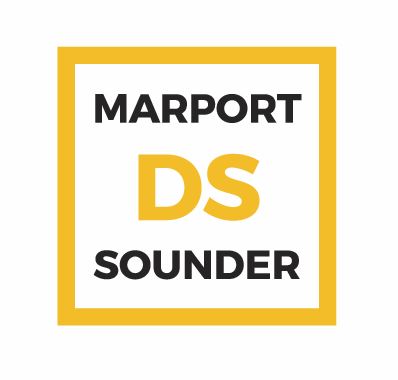
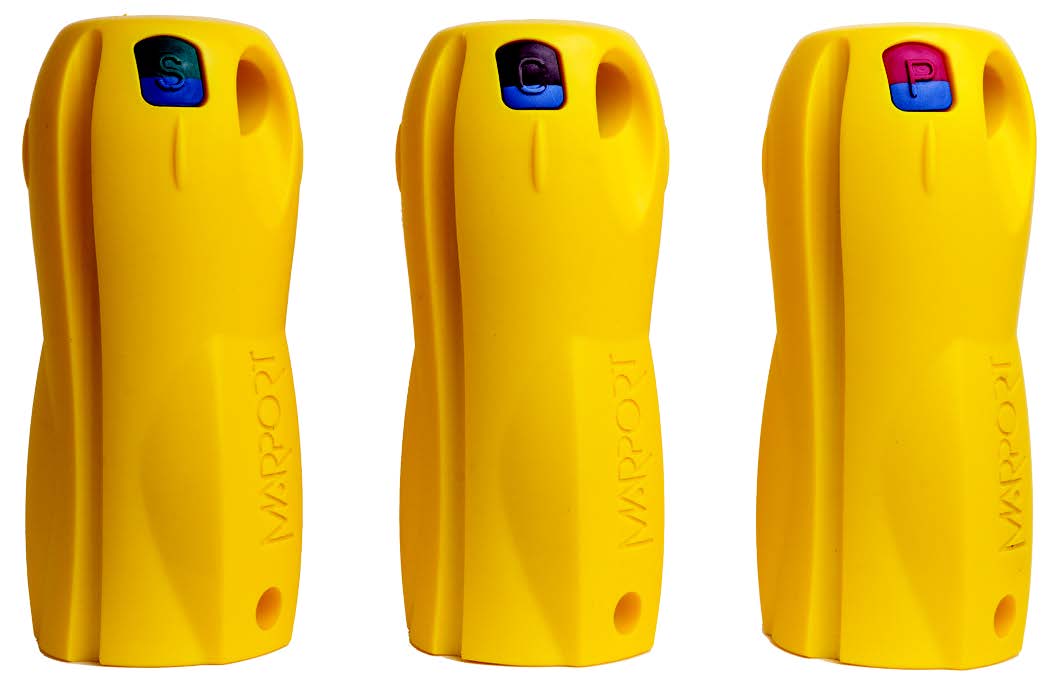
The Door Sounder provides rapid, accurate information.
This lightweight trawl door sounder has been developed specifically for trawlers towing demersal trawls spread with a pair of pelagic doors flown off the seabed. This DS-XXX-W sounder is there to provide rapid, accurate information, allowing the skipper to be sure of the clearance between the door shoes and the seabed and to maintain a steady distance. This sounder is multi-function, single-frequency that includes depth, height and temperature indicators as standard. In addition to its prime function of checking the seabed distance, it functions as a down sounder to show fishing passing underneath towards the trawl, complementing codend sensors and codend sounders. This makes it possible to estimate volumes of fish as they appear at the front of the gear. It has a full echogram presentation in addition to simple digital clearance readout, with all functions accessible simultaneously. Offered in high resolution narrow band with rapid updates, it has a battery life that typically reaches 60 hours with the standard 8-12 hour charge, while a 3.5 fast charge option is also available and low power settings can be selected to prolong battery life.
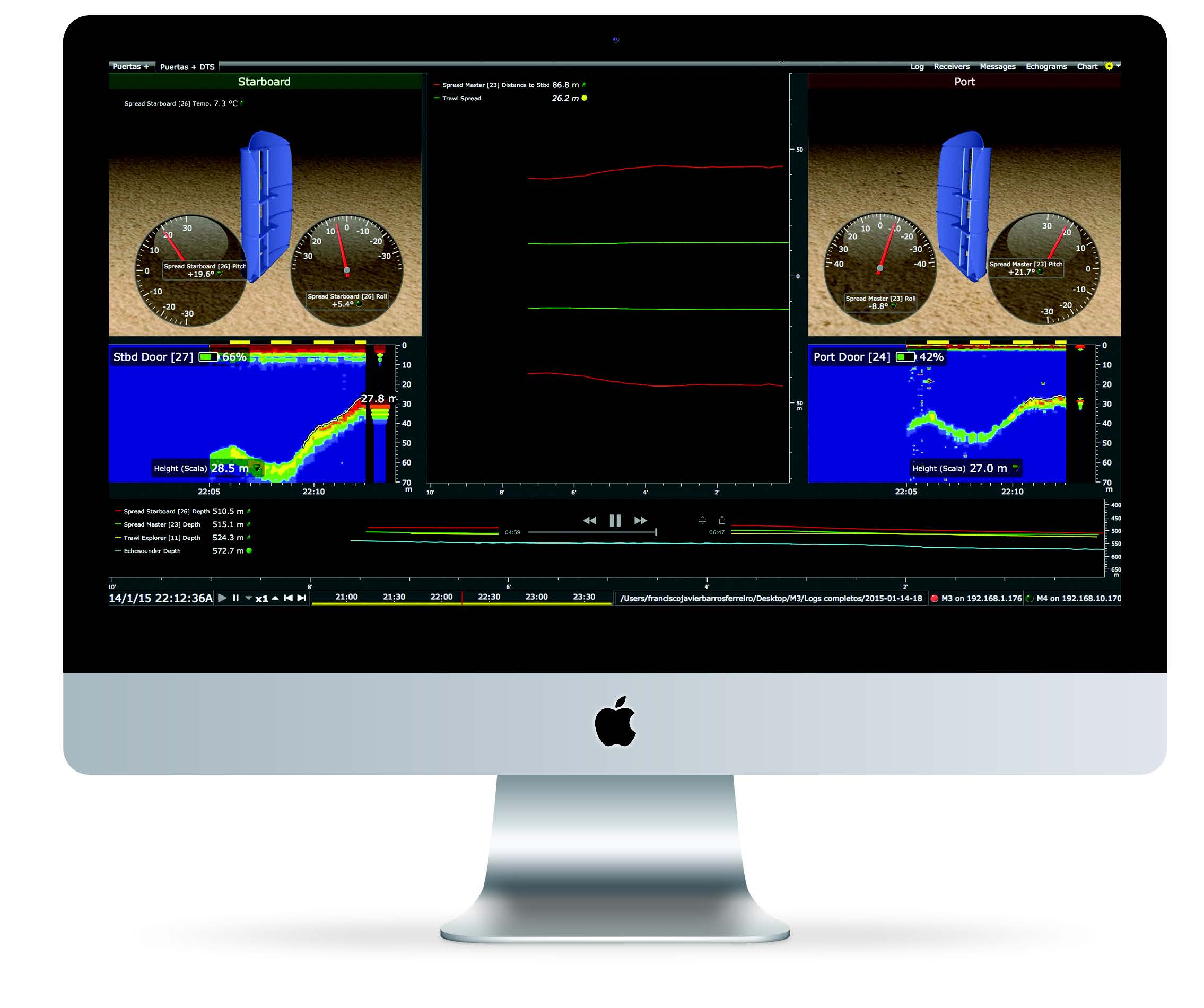
Distance to bottom displayed as a real echogram
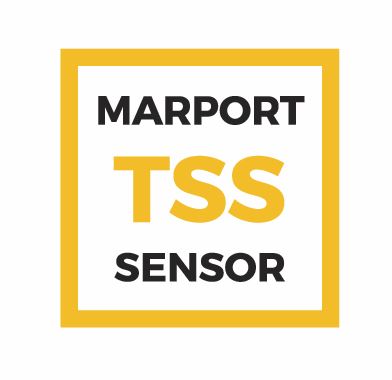
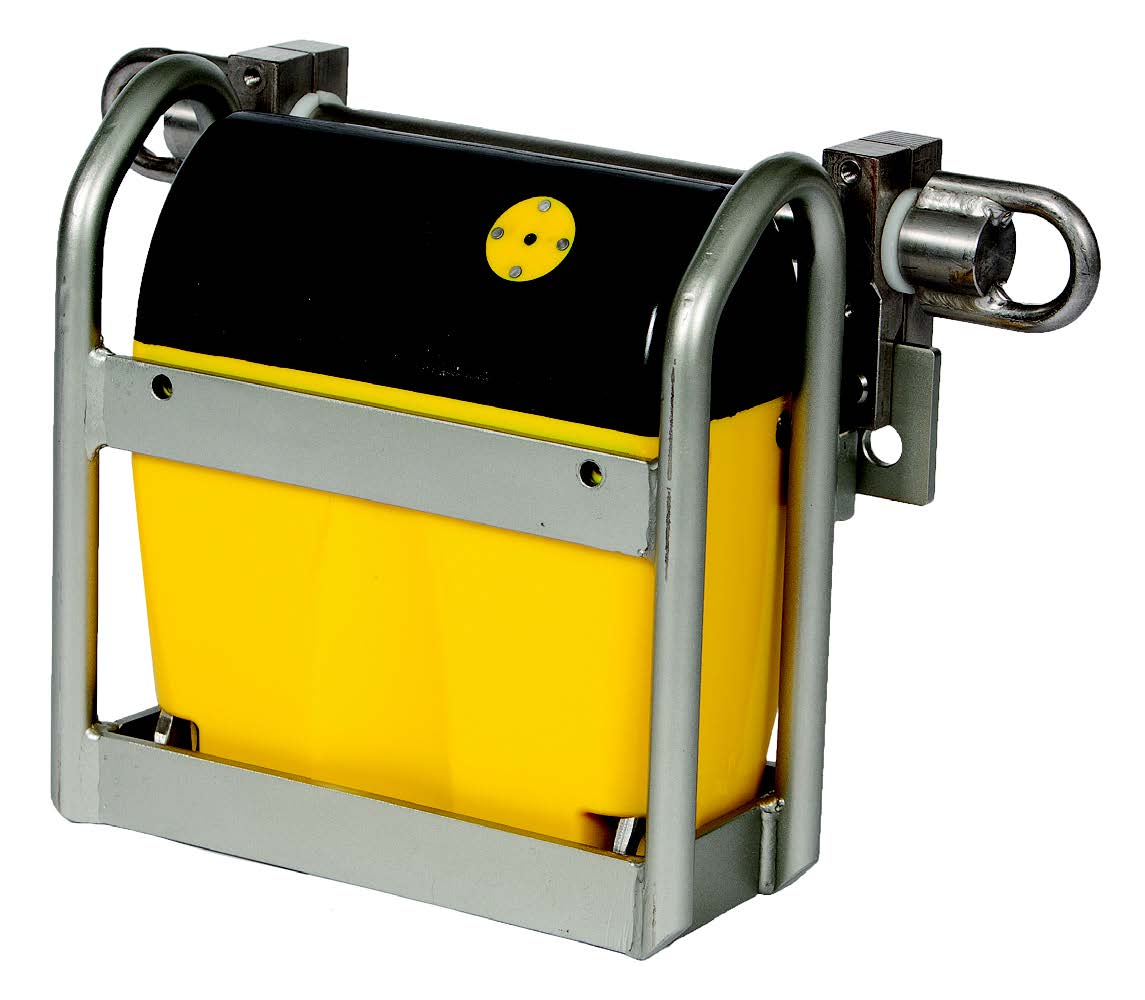
The Trawl Speed & Grid sensor is designed to give a trawler’s skipper realistic information on how a grid is performing.
With a great many fisheries now subject to requirements to use selectivity devices, Marport’s latest Trawl Speed & Grid sensor is designed to give a trawler’s skipper realistic information on how a grid is performing, ensuring that a tow isn’t lost due to some minor malfunction that could easily have been avoided with the right information available. The Trawl Speed & Grid sensor is capable of measuring water flow in two axes, providing flow data as well as cross-current data, allowing corrections to be made to compensate for cross-currents when towing uphill or with mismatched warp lengths that can skew trawl geometry.
Speeds of up to six knots can be monitored effectively and cross-currents of up to three knots are within the sensor’s capabilities. The sensor’s fundamental functions in monitoring water flow through and across a trawl’s tunnel are complemented by its advanced angle sensor, ensuring that the critical grid angle is maintained throughout the tow, and providing early warning of a grid becoming blocked and the target species deflected from reaching the codend. Updates for both flow and angle data are rapid. As much as 90 hours of operation can be obtained from a single charge, with a fast charge option available when a quick turnaround is needed.
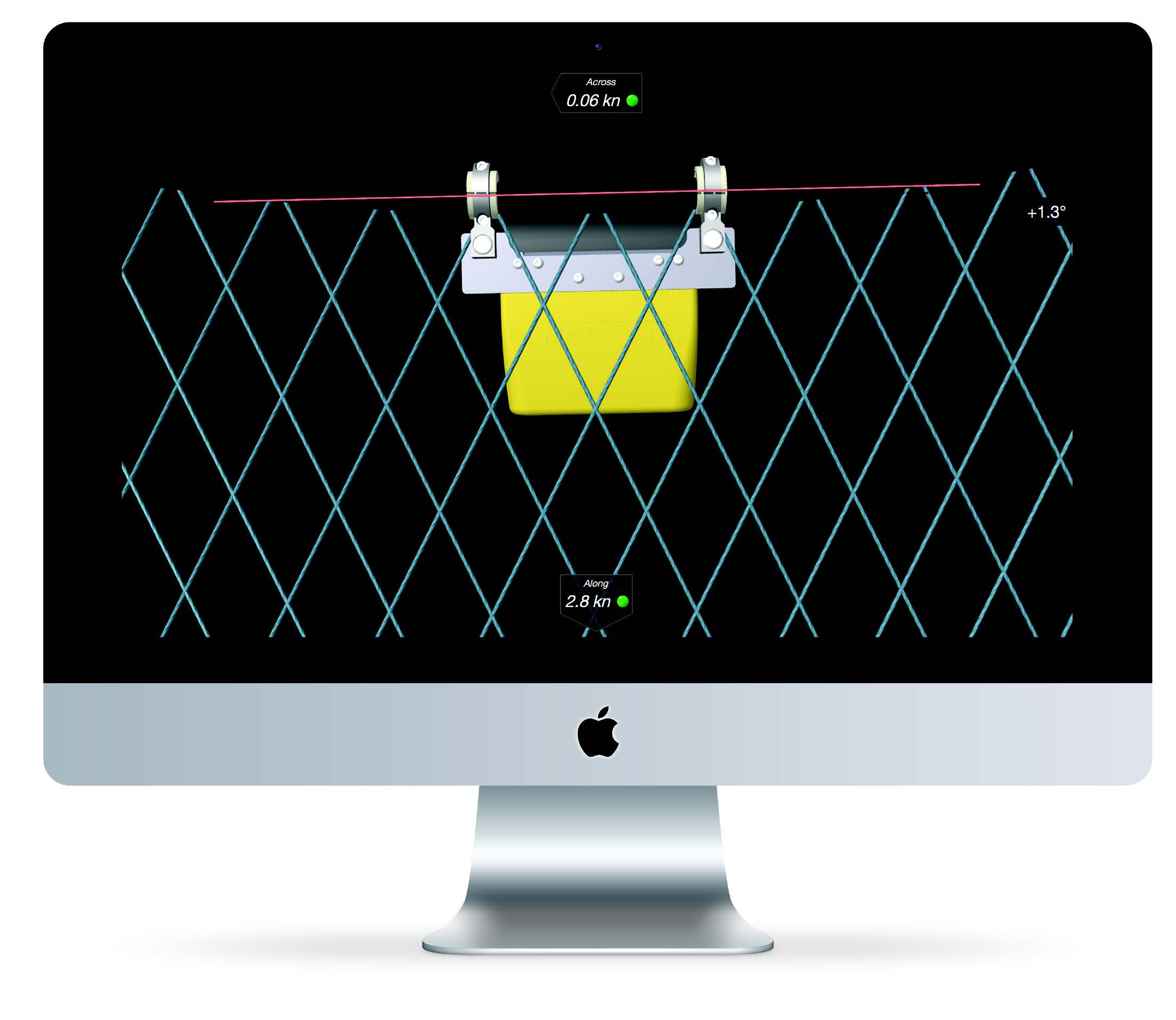
Flow is displayed accurately with 3d model instantly showing symmetry status at a glance
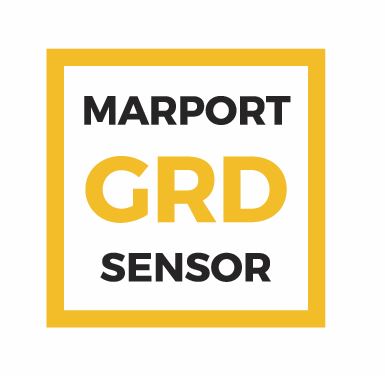
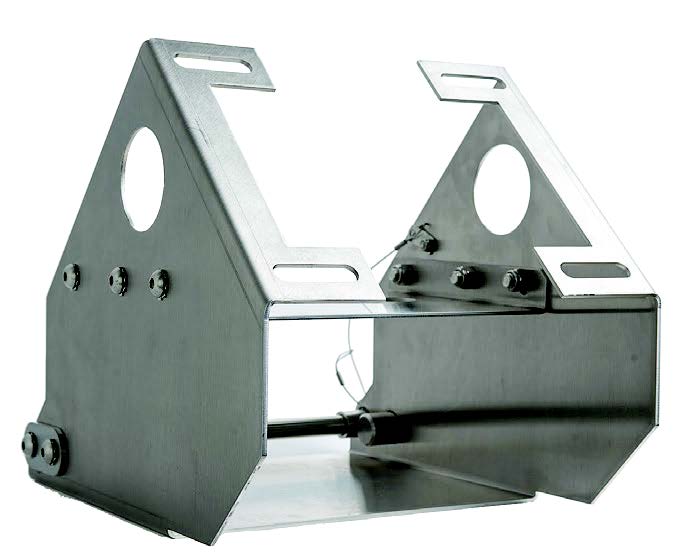
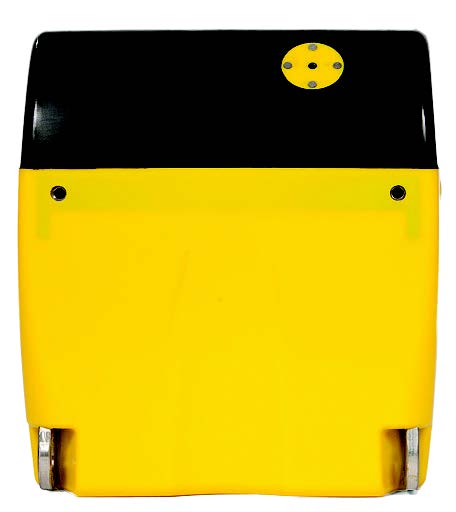
Selecting out the unwanted catch while the target species makes its way down to the codend.
Sorting grids have been with us since the nineties when they were first introduced to filter out fish from shrimp catches and their use has been extended to numerous other fisheries. The sorting grid is a critical point in a trawl, where a bottleneck can be formed if the grid becomes blocked so that nothing makes its way to the codend, or if the angle alters, the grid may be no longer effective. The efficiency of the fishing gear as a whole can pivot on the effectiveness of the grid, and a blocked or underperforming grid can be a skipper’s nightmare. In many fisheries the use of a grid is mandatory and they are generally subject to tight regulation. Marport’s Grid Sensor is designed to give the skipper peace of mind that the grid is doing its job – selecting out the unwanted catch while the target species makes its way down to the codend. The Grid Sensor has the dual function of reporting the angle of the grid to the wheelhouse, alerting the officer on watch if the angle changes, while also monitoring the flow of water passing through the grid. This provides a warning that the grid is becoming blocked, impeding the passage of target species, and providing an opportunity to haul the gear and fix the problem before any significant catches are lost.
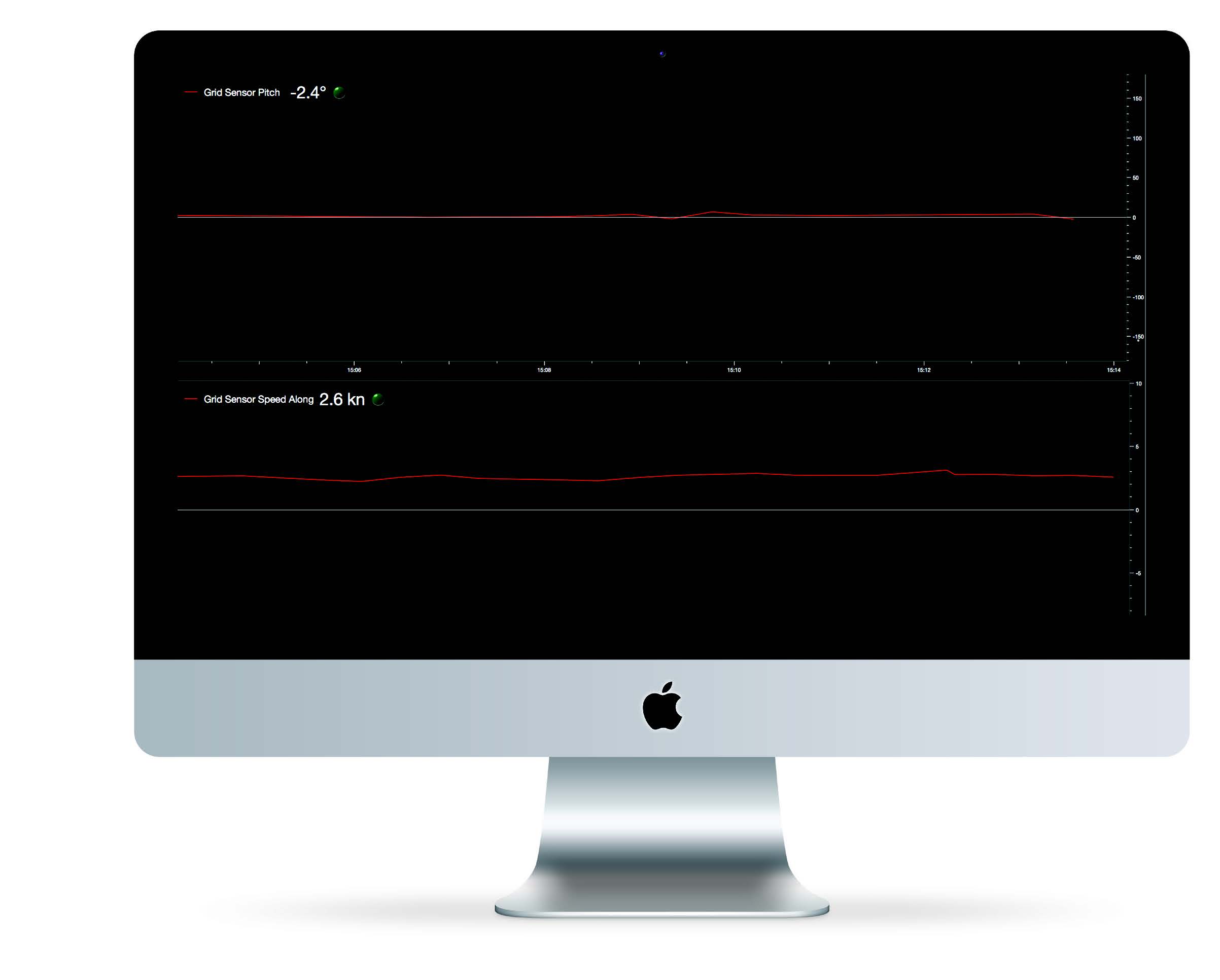
Flow & Angle information displayed as either text or line graph.

